Essay on Inflation: Types, Causes and Effects
Essay on Inflation!

Essay on the Meaning of Inflation:
Inflation and unemployment are the two most talked-about words in the contemporary society. These two are the big problems that plague all the economies. Almost everyone is sure that he knows what inflation exactly is, but it remains a source of great deal of confusion because it is difficult to define it unambiguously.
Inflation is often defined in terms of its supposed causes. Inflation exists when money supply exceeds available goods and services. Or inflation is attributed to budget deficit financing. A deficit budget may be financed by additional money creation. But the situation of monetary expansion or budget deficit may not cause price level to rise. Hence the difficulty of defining ‘inflation’ .
Inflation may be defined as ‘a sustained upward trend in the general level of prices’ and not the price of only one or two goods. G. Ackley defined inflation as ‘a persistent and appreciable rise in the general level or average of prices’ . In other words, inflation is a state of rising price level, but not rise in the price level. It is not high prices but rising prices that constitute inflation.
ADVERTISEMENTS:
It is an increase in the overall price level. A small rise in prices or a sudden rise in prices is not inflation since these may reflect the short term workings of the market. It is to be pointed out here that inflation is a state of disequilibrium when there occurs a sustained rise in price level.
It is inflation if the prices of most goods go up. However, it is difficult to detect whether there is an upward trend in prices and whether this trend is sustained. That is why inflation is difficult to define in an unambiguous sense.
Let’s measure inflation rate. Suppose, in December 2007, the consumer price index was 193.6 and, in December 2008 it was 223.8. Thus the inflation rate during the last one year was 223.8 – 193.6/193.6 × 100 = 15.6%.
As inflation is a state of rising prices, deflation may be defined as a state of falling prices but not fall in prices. Deflation is, thus, the opposite of inflation, i.e., rise in the value or purchasing power of money. Disinflation is a slowing down of the rate of inflation.
Essay on the Types of Inflation :
As the nature of inflation is not uniform in an economy for all the time, it is wise to distinguish between different types of inflation. Such analysis is useful to study the distributional and other effects of inflation as well as to recommend anti-inflationary policies.
Inflation may be caused by a variety of factors. Its intensity or pace may be different at different times. It may also be classified in accordance with the reactions of the government toward inflation.
Thus, one may observe different types of inflation in the contemporary society:
(a) According to Causes:
i. Currency Inflation:
This type of inflation is caused by the printing of currency notes.
ii. Credit Inflation:
Being profit-making institutions, commercial banks sanction more loans and advances to the public than what the economy needs. Such credit expansion leads to a rise in price level.
iii. Deficit-Induced Inflation:
The budget of the government reflects a deficit when expenditure exceeds revenue. To meet this gap, the government may ask the central bank to print additional money. Since pumping of additional money is required to meet the budget deficit, any price rise may be called deficit-induced inflation.
iv. Demand-Pull Inflation:
An increase in aggregate demand over the available output leads to a rise in the price level. Such inflation is called demand-pull inflation (henceforth DPI). But why does aggregate demand rise? Classical economists attribute this rise in aggregate demand to money supply.
If the supply of money in an economy exceeds the available goods and services, DPI appears. It has been described by Coulborn as a situation of “too much money chasing too few goods” .

Note that, in this region, price level begins to rise. Ultimately, the economy reaches full employment situation, i.e., Range 3, where output does not rise but price level is pulled upward. This is demand-pull inflation. The essence of this type of inflation is “too much spending chasing too few goods.”
v. Cost-Push Inflation:
Inflation in an economy may arise from the overall increase in the cost of production. This type of inflation is known as cost-push inflation (henceforth CPI). Cost of production may rise due to increase in the price of raw materials, wages, etc. Often trade unions are blamed for wage rise since wage rate is not market-determined. Higher wage means higher cost of production.
Prices of commodities are thereby increased. A wage-price spiral comes into operation. But, at the same time, firms are to be blamed also for the price rise since they simply raise prices to expand their profit margins. Thus we have two important variants of CPI: wage-push inflation and profit-push inflation. Anyway, CPI stems from the leftward shift of the aggregate supply curve.

The price level thus determined is OP 1 . As aggregate demand curve shifts to AD 2 , price level rises to OP 2 . Thus, an increase in aggregate demand at the full employment stage leads to an increase in price level only, rather than the level of output. However, how much price level will rise following an increase in aggregate demand depends on the slope of the AS curve.
Causes of Demand-Pull Inflation :
DPI originates in the monetary sector. Monetarists’ argument that “only money matters” is based on the assumption that at or near full employment, excessive money supply will increase aggregate demand and will thus cause inflation.
An increase in nominal money supply shifts aggregate demand curve rightward. This enables people to hold excess cash balances. Spending of excess cash balances by them causes price level to rise. Price level will continue to rise until aggregate demand equals aggregate supply.
Keynesians argue that inflation originates in the non-monetary sector or the real sector. Aggregate demand may rise if there is an increase in consumption expenditure following a tax cut. There may be an autonomous increase in business investment or government expenditure. Governmental expenditure is inflationary if the needed money is procured by the government by printing additional money.
In brief, an increase in aggregate demand i.e., increase in (C + I + G + X – M) causes price level to rise. However, aggregate demand may rise following an increase in money supply generated by the printing of additional money (classical argument) which drives prices upward. Thus, money plays a vital role. That is why Milton Friedman believes that inflation is always and everywhere a monetary phenomenon.
There are other reasons that may push aggregate demand and, hence, price level upwards. For instance, growth of population stimulates aggregate demand. Higher export earnings increase the purchasing power of the exporting countries.
Additional purchasing power means additional aggregate demand. Purchasing power and, hence, aggregate demand, may also go up if government repays public debt. Again, there is a tendency on the part of the holders of black money to spend on conspicuous consumption goods. Such tendency fuels inflationary fire. Thus, DPI is caused by a variety of factors.
Cost-Push Inflation Theory :
In addition to aggregate demand, aggregate supply also generates inflationary process. As inflation is caused by a leftward shift of the aggregate supply, we call it CPI. CPI is usually associated with the non-monetary factors. CPI arises due to the increase in cost of production. Cost of production may rise due to a rise in the cost of raw materials or increase in wages.
Such increases in costs are passed on to consumers by firms by raising the prices of the products. Rising wages lead to rising costs. Rising costs lead to rising prices. And rising prices, again, prompt trade unions to demand higher wages. Thus, an inflationary wage-price spiral starts.
This causes aggregate supply curve to shift leftward. This can be demonstrated graphically (Fig. 11.4) where AS 1 is the initial aggregate supply curve. Below the full employment stage this AS curve is positive sloping and at full employment stage it becomes perfectly inelastic. Intersection point (E 1 ) of AD 1 and AS 1 curves determines the price level.
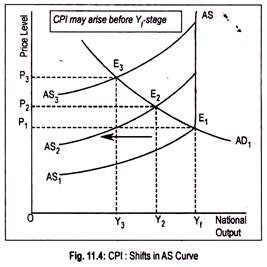
Now, there is a leftward shift of aggregate supply curve to AS 2 . With no change in aggregate demand, this causes price level to rise to OP 2 and output to fall to OY 2 .
With the reduction in output, employment in the economy declines or unemployment rises. Further shift in the AS curve to AS 2 results in higher price level (OP 3 ) and a lower volume of aggregate output (OY 3 ). Thus, CPI may arise even below the full employment (Y f ) stage.
Causes of CPI :
It is the cost factors that pull the prices upward. One of the important causes of price rise is the rise in price of raw materials. For instance, by an administrative order the government may hike the price of petrol or diesel or freight rate. Firms buy these inputs now at a higher price. This leads to an upward pressure on cost of production.
Not only this, CPI is often imported from outside the economy. Increase in the price of petrol by OPEC compels the government to increase the price of petrol and diesel. These two important raw materials are needed by every sector, especially the transport sector. As a result, transport costs go up resulting in higher general price level.
Again, CPI may be induced by wage-push inflation or profit-push inflation. Trade unions demand higher money wages as a compensation against inflationary price rise. If increase in money wages exceeds labour productivity, aggregate supply will shift upward and leftward. Firms often exercise power by pushing up prices independently of consumer demand to expand their profit margins.
Fiscal policy changes, such as an increase in tax rates leads to an upward pressure in cost of production. For instance, an overall increase in excise tax of mass consumption goods is definitely inflationary. That is why government is then accused of causing inflation.
Finally, production setbacks may result in decreases in output. Natural disaster, exhaustion of natural resources, work stoppages, electric power cuts, etc., may cause aggregate output to decline.
In the midst of this output reduction, artificial scarcity of any goods by traders and hoarders just simply ignite the situation.
Inefficiency, corruption, mismanagement of the economy may also be the other reasons. Thus, inflation is caused by the interplay of various factors. A particular factor cannot be held responsible for inflationary price rise.
Essay on the Effects of Inflation :
People’s desires are inconsistent. When they act as buyers they want prices of goods and services to remain stable but as sellers they expect the prices of goods and services should go up. Such a happy outcome may arise for some individuals; “but, when this happens, others will be getting the worst of both worlds.” Since inflation reduces purchasing power it is bad.
The old people are in the habit of recalling the days when the price of say, meat per kilogram cost just 10 rupees. Today it is Rs. 250 per kilogram. This is true for all other commodities. When they enjoyed a better living standard. Imagine today, how worse we are! But meanwhile, wages and salaries of people have risen to a great height, compared to the ‘good old days’. This goes unusually untold.
When price level goes up, there is both a gainer and a loser. To evaluate the consequence of inflation, one must identify the nature of inflation which may be anticipated and unanticipated. If inflation is anticipated, people can adjust with the new situation and costs of inflation to the society will be smaller.
In reality, people cannot predict accurately future events or people often make mistakes in predicting the course of inflation. In other words, inflation may be unanticipated when people fail to adjust completely. This creates various problems.
One can study the effects of unanticipated inflation under two broad headings:
(i) Effect on distribution of income and wealth
(ii) Effect on economic growth.
(a) Effects of Inflation on Income and Wealth Distribution :
During inflation, usually people experience rise in incomes. But some people gain during inflation at the expense of others. Some individuals gain because their money incomes rise more rapidly than the prices and some lose because prices rise more rapidly than their incomes during inflation. Thus, it redistributes income and wealth.
Though no conclusive evidence can be cited, it can be asserted that following categories of people are affected by inflation differently:
i. Creditors and Debtors:
Borrowers gain and lenders lose during inflation because debts are fixed in rupee terms. When debts are repaid their real value declines by the price level increase and, hence, creditors lose. An individual may be interested in buying a house by taking a loan of Rs. 7 lakh from an institution for 7 years.
The borrower now welcomes inflation since he will have to pay less in real terms than when it was borrowed. Lender, in the process, loses since the rate of interest payable remains unaltered as per agreement. Because of inflation, the borrower is given ‘dear’ rupees, but pays back ‘cheap’ rupees.
However, if in an inflation-ridden economy creditors chronically loose, it is wise not to advance loans or to shut down business. Never does it happen. Rather, the loan- giving institution makes adequate safeguard against the erosion of real value.
ii. Bond and Debenture-Holders:
In an economy, there are some people who live on interest income—they suffer most.
Bondholders earn fixed interest income:
These people suffer a reduction in real income when prices rise. In other words, the value of one’s savings decline if the interest rate falls short of inflation rate. Similarly, beneficiaries from life insurance programmes are also hit badly by inflation since real value of savings deteriorate.
iii. Investors:
People who put their money in shares during inflation are expected to gain since the possibility of earning business profit brightens. Higher profit induces owners of firms to distribute profit among investors or shareholders.
iv. Salaried People and Wage-Earners:
Anyone earning a fixed income is damaged by inflation. Sometimes, unionized worker succeeds in raising wage rates of white-collar workers as a compensation against price rise. But wage rate changes with a long time lag. In other words, wage rate increases always lag behind price increases.
Naturally, inflation results in a reduction in real purchasing power of fixed income earners. On the other hand, people earning flexible incomes may gain during inflation. The nominal incomes of such people outstrip the general price rise. As a result, real incomes of this income group increase.
v. Profit-Earners, Speculators and Black Marketeers:
It is argued that profit-earners gain from inflation. Profit tends to rise during inflation. Seeing inflation, businessmen raise the prices of their products. This results in a bigger profit. Profit margin, however, may not be high when the rate of inflation climbs to a high level.
However, speculators dealing in business in essential commodities usually stand to gain by inflation. Black marketeers are also benefited by inflation.
Thus, there occurs a redistribution of income and wealth. It is said that rich becomes richer and poor becomes poorer during inflation. However, no such hard and fast generalizations can be made. It is clear that someone wins and someone loses from inflation.
These effects of inflation may persist if inflation is unanticipated. However, the redistributive burdens of inflation on income and wealth are most likely to be minimal if inflation is anticipated by the people.
With anticipated inflation, people can build up their strategies to cope with inflation. If the annual rate of inflation in an economy is anticipated correctly people will try to protect them against losses resulting from inflation.
Workers will demand 10 p.c. wage increase if inflation is expected to rise by 10 p.c. Similarly, a percentage of inflation premium will be demanded by creditors from debtors. Business firms will also fix prices of their products in accordance with the anticipated price rise. Now if the entire society “learns to live with inflation” , the redistributive effect of inflation will be minimal.
However, it is difficult to anticipate properly every episode of inflation. Further, even if it is anticipated it cannot be perfect. In addition, adjustment with the new expected inflationary conditions may not be possible for all categories of people. Thus, adverse redistributive effects are likely to occur.
Finally, anticipated inflation may also be costly to the society. If people’s expectation regarding future price rise become stronger they will hold less liquid money. Mere holding of cash balances during inflation is unwise since its real value declines. That is why people use their money balances in buying real estate, gold, jewellery, etc.
Such investment is referred to as unproductive investment. Thus, during inflation of anticipated variety, there occurs a diversion of resources from priority to non-priority or unproductive sectors.
b. Effect on Production and Economic Growth :
Inflation may or may not result in higher output. Below the full employment stage, inflation has a favourable effect on production. In general, profit is a rising function of the price level. An inflationary situation gives an incentive to businessmen to raise prices of their products so as to earn higher doses of profit.
Rising price and rising profit encourage firms to make larger investments. As a result, the multiplier effect of investment will come into operation resulting in higher national output. However, such a favourable effect of inflation will be temporary if wages and production costs rise very rapidly.
Further, inflationary situation may be associated with the fall in output, particularly if inflation is of the cost-push variety. Thus, there is no strict relationship between prices and output. An increase in aggregate demand will increase both prices and output, but a supply shock will raise prices and lower output.
Inflation may also lower down further production levels. It is commonly assumed that if inflationary tendencies nurtured by experienced inflation persist in future, people will now save less and consume more. Rising saving propensities will result in lower further outputs.
One may also argue that inflation creates an air of uncertainty in the minds of business community, particularly when the rate of inflation fluctuates. In the midst of rising inflationary trend, firms cannot accurately estimate their costs and revenues. Under the circumstance, business firms may be deterred in investing. This will adversely affect the growth performance of the economy.
However, slight dose of inflation is necessary for economic growth. Mild inflation has an encouraging effect on national output. But it is difficult to make the price rise of a creeping variety. High rate of inflation acts as a disincentive to long run economic growth. The way the hyperinflation affects economic growth is summed up here.
We know that hyperinflation discourages savings. A fall in savings means a lower rate of capital formation. A low rate of capital formation hinders economic growth. Further, during excessive price rise, there occurs an increase in unproductive investment in real estate, gold, jewellery, etc.
Above all, speculative businesses flourish during inflation resulting in artificial scarcities and, hence, further rise in prices. Again, following hyperinflation, export earnings decline resulting in a wide imbalance in the balance of payments account.
Often, galloping inflation results in a ‘flight’ of capital to foreign countries since people lose confidence and faith over the monetary arrangements of the country, thereby resulting in a scarcity of resources. Finally, real value of tax revenue also declines under the impact of hyperinflation. Government then experiences a shortfall in investible resources.
Thus, economists and policy makers are unanimous regarding the dangers of high price rise. But the consequence of hyperinflation is disastrous. In the past, some of the world economies (e.g., Germany after the First World War (1914-1918), Latin American countries in the 1980s) had been greatly ravaged by hyperinflation.
The German Inflation of 1920s was also Catastrophic:
During 1922, the German price level went up 5,470 per cent, in 1923, the situation worsened; the German price level rose 1,300,000,000 times. By October of 1923, the postage of the lightest letter sent from Germany to the United States was 200,000 marks.
Butter cost 1.5 million marks per pound, meat 2 million marks, a loaf of bread 200,000 marks, and an egg 60,000 marks Prices increased so rapidly that waiters changed the prices on the menu several times during the course of a lunch!! Sometimes, customers had to pay double the price listed on the menu when they observed it first!!!
During October 2008, Zimbabwe, under the President-ship of Robert G. Mugabe, experienced 231,000,000 p.c. (2.31 million p.c.) as against 1.2 million p.c. price rise in September 2008—a record after 1923. It is an unbelievable rate. In May 2008, the cost of price of a toilet paper itself and not the costs of the roll of the toilet paper came to 417 Zimbabwean dollars.
Anyway, people are harassed ultimately by the high rate of inflation. That is why it is said that ‘inflation is our public enemy number one’. Rising inflation rate is a sign of failure on the part of the government.
Related Articles:
- Essay on the Causes of Inflation (473 Words)
- Cost-Push Inflation and Demand-Pull or Mixed Inflation
- Demand Pull Inflation and Cost Push Inflation | Money
- Essay on Inflation: Meaning, Measurement and Causes
What is inflation?
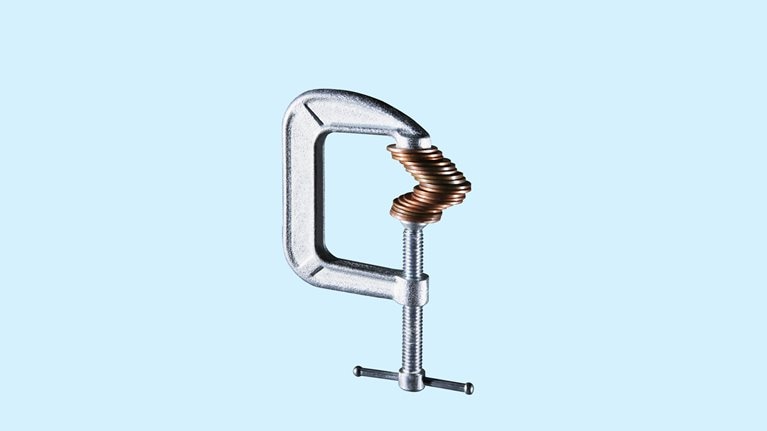
Inflation has been top of mind for many over the past few years. But how long will it persist? In June 2022, inflation in the United States jumped to 9.1 percent, reaching the highest level since February 1982. The inflation rate has since slowed in the United States , as well as in Europe , Japan , and the United Kingdom , particularly in the final months of 2023. But even though global inflation is higher than it was before the COVID-19 pandemic, when it hovered around 2 percent, it’s receding to historical levels . In fact, by late 2022, investors were predicting that long-term inflation would settle around a modest 2.5 percent. That’s a far cry from fears that long-term inflation would mimic trends of the 1970s and early 1980s—when inflation exceeded 10 percent.
Get to know and directly engage with senior McKinsey experts on inflation.
Ondrej Burkacky is a senior partner in McKinsey’s Munich office, Axel Karlsson is a senior partner in the Stockholm office, Fernando Perez is a senior partner in the Miami office, Emily Reasor is a senior partner in the Denver office, and Daniel Swan is a senior partner in the Stamford, Connecticut, office.
Inflation refers to a broad rise in the prices of goods and services across the economy over time, eroding purchasing power for both consumers and businesses. Economic theory and practice, observed for many years and across many countries, shows that long-lasting periods of inflation are caused in large part by what’s known as an easy monetary policy . In other words, when a country’s central bank sets the interest rate too low or increases money growth too rapidly, inflation goes up. As a result, your dollar (or whatever currency you use) will not go as far today as it did yesterday. For example: in 1970, the average cup of coffee in the United States cost 25 cents; by 2019, it had climbed to $1.59. So for $5, you would have been able to buy about three cups of coffee in 2019, versus 20 cups in 1970. That’s inflation, and it isn’t limited to price spikes for any single item or service; it refers to increases in prices across a sector, such as retail or automotive—and, ultimately, a country’s economy.
How does inflation affect your daily life? You’ve probably seen high rates of inflation reflected in your bills—from groceries to utilities to even higher mortgage payments. Executives and corporate leaders have had to reckon with the effects of inflation too, figuring out how to protect margins while paying more for raw materials.
But inflation isn’t all bad. In a healthy economy, annual inflation is typically in the range of two percentage points, which is what economists consider a sign of pricing stability. When inflation is in this range, it can have positive effects: it can stimulate spending and thus spur demand and productivity when the economy is slowing down and needs a boost. But when inflation begins to surpass wage growth, it can be a warning sign of a struggling economy.

Introducing McKinsey Explainers : Direct answers to complex questions
Inflation may be declining in many markets, but there’s still uncertainty ahead: without a significant surge in productivity, Western economies may be headed for a period of sustained inflation or major economic reset , as Japan has experienced in the first decades of the 21st century.
What does seem to be changing are leaders’ attitudes. According to the 2023 year-end McKinsey Global Survey on economic conditions , respondents reported less fear about inflation as a risk to global and domestic economic growth . But this sentiment varies significantly by region: European respondents were most concerned about the effects of inflation, whereas respondents in North America offered brighter views.
What causes inflation?
Monetary policy is a critical driver of inflation over the long term. The current high rate of inflation is a result of increased money supply , high raw materials costs , labor mismatches , and supply disruptions —exacerbated by geopolitical conflict .
In general, there are two primary types, or causes, of short-term inflation:
- Demand-pull inflation occurs when the demand for goods and services in the economy exceeds the economy’s ability to produce them. For example, when demand for new cars recovered more quickly than anticipated from its sharp dip at the beginning of the COVID-19 pandemic, an intervening shortage in the supply of semiconductors made it hard for the automotive industry to keep up with this renewed demand. The subsequent shortage of new vehicles resulted in a spike in prices for new and used cars.
- Cost-push inflation occurs when the rising price of input goods and services increases the price of final goods and services. For example, commodity prices spiked sharply during the pandemic as a result of radical shifts in demand, buying patterns, cost to serve, and perceived value across sectors and value chains. To offset inflation and minimize impact on financial performance, industrial companies were forced to increase prices for end consumers.
Learn more about McKinsey’s Growth, Marketing & Sales Practice.
What are some periods in history with high inflation?
Economists frequently compare the current inflationary period with the post–World War II era , when price controls, supply problems, and extraordinary demand in the United States fueled double-digit inflation gains—peaking at 20 percent in 1947—before subsiding at the end of the decade. Consumption patterns today have been similarly distorted, and supply chains have been disrupted by the pandemic.
The period from the mid-1960s through the early 1980s in the United States, sometimes called the “Great Inflation,” saw some of the country’s highest rates of inflation, with a peak of 14.8 percent in 1980. To combat this inflation, the Federal Reserve raised interest rates to nearly 20 percent. Some economists attribute this episode partially to monetary policy mistakes rather than to other causes, such as high oil prices. The Great Inflation signaled the need for public trust in the Federal Reserve’s ability to lessen inflationary pressures.
Inflation isn’t solely a modern-day phenomenon, of course. One very early example of inflation comes from Roman times, from around 200 to 300 CE. Roman leaders were struggling to fund an army big enough to deal with attackers from multiple fronts. To help, they watered down the silver in their coinage, causing the value of money to slowly fall—and inflation to pick up. This led merchants to raise their prices, causing widespread panic. In response, the emperor Diocletian issued what’s now known as the Edict on Maximum Prices, a series of price and wage controls designed to stop the rise of prices and wages (one helpful control was a maximum price for a male lion). But because the edict didn’t address the root cause of inflation—the impure silver coin—it didn’t fix the problem.
How is inflation measured?
Statistical agencies measure inflation first by determining the current value of a “basket” of various goods and services consumed by households, referred to as a price index. To calculate the rate of inflation over time, statisticians compare the value of the index over one period with that of another. Comparing one month with another gives a monthly rate of inflation, and comparing from year to year gives an annual rate of inflation.
In the United States, the Bureau of Labor Statistics publishes its Consumer Price Index (CPI), which measures the cost of items that urban consumers buy out of pocket. The CPI is broken down by region and is reported for the country as a whole. The Personal Consumption Expenditures (PCE) price index —published by the US Bureau of Economic Analysis—takes into account a broader range of consumer spending, including on healthcare. It is also weighted by data acquired through business surveys.
How does inflation affect consumers and companies differently?
Inflation affects consumers most directly, but businesses can also feel the impact:
- Consumers lose purchasing power when the prices of items they buy, such as food, utilities, and gasoline, increase. This can lead to household belt-tightening and growing pessimism about the economy .
- Companies lose purchasing power and risk seeing their margins decline , when prices increase for inputs used in production. These can include raw materials like coal and crude oil , intermediate products such as flour and steel, and finished machinery. In response, companies typically raise the prices of their products or services to offset inflation, meaning consumers absorb these price increases. The challenge for many companies is to strike the right balance between raising prices to cover input cost increases while simultaneously ensuring that they don’t raise prices so much that they suppress demand.
How can organizations respond to high inflation?
During periods of high inflation, companies typically pay more for materials , which decreases their margins. One way for companies to offset losses and maintain margins is by raising prices for consumers. However, if price increases are not executed thoughtfully, companies can damage customer relationships and depress sales —ultimately eroding the profits they were trying to protect.
When done successfully, recovering the cost of inflation for a given product can strengthen relationships and overall margins. There are five steps companies can take to ADAPT (adjust, develop, accelerate, plan, and track) to inflation:
- Adjust discounting and promotions and maximize nonprice levers. This can include lengthening production schedules or adding surcharges and delivery fees for rush or low-volume orders.
- Develop the art and science of price change. Instead of making across-the-board price changes, tailor pricing actions to account for inflation exposure, customer willingness to pay, and product attributes.
- Accelerate decision making tenfold. Establish an “inflation council” that includes dedicated cross-functional, inflation-focused decision makers who can act quickly and nimbly on customer feedback.
- Plan options beyond pricing to reduce costs. Use “value engineering” to reimagine a portfolio and provide cost-reducing alternatives to price increases.
- Track execution relentlessly. Create a central supporting team to address revenue leakage and to manage performance rigorously. Traditional performance metrics can be less reliable when inflation is high .
Beyond pricing, a variety of commercial and technical levers can help companies deal with price increases in an inflationary market , but other sectors may require a more tailored response to pricing.
Learn more about our Financial Services , Industrials & Electronics , Operations , Strategy & Corporate Finance , and Growth, Marketing & Sales Practices.
How can CEOs help protect their organizations against uncertainty during periods of high inflation?
In today’s uncertain environment, in which organizations have a much wider range of stakeholders, leaders must think about performance beyond short-term profitability. CEOs should lead with the complete business cycle and their complete slate of stakeholders in mind.
CEOs need an inflation management playbook , just as central bankers do. Here are some important areas to keep in mind while scripting it:
- Design. Leaders should motivate their organizations to raise the profile of design to a C-suite topic. Design choices for products and services are critical for responding to price volatility, scarcity of components, and higher production and servicing costs.
- Supply chain. The most difficult task for CEOs may be convincing investors to accept supply chain resiliency as the new table stakes. Given geopolitical and economic realities, supply chain resiliency has become a crucial goal for supply chain leaders, alongside cost optimization.
- Procurement. CEOs who empower their procurement organizations can raise the bar on value-creating contributions. Procurement leaders have told us time and again that the current market environment is the toughest they’ve experienced in decades. CEOs are beginning to recognize that purchasing leaders can be strategic partners by expanding their focus beyond cost cutting to value creation.
- Feedback. A CEO can take a lead role in playing back the feedback the organization is hearing. In today’s tight labor market, CEOs should guide their companies to take a new approach to talent, focusing on compensation, cultural factors, and psychological safety .
- Pricing. Forging new pricing relationships with customers will test CEOs in their role as the “ultimate integrator.” Repricing during inflationary times is typically unpleasant for companies and customers alike. With setting new prices, CEOs have the opportunity to forge deeper relationships with customers, by turning to promotions, personalization , and refreshed communications around value.
- Agility. CEOs can strive to achieve a focus based more on strategic action and less on firefighting. Managing the implications of inflation calls for a cross-functional, disciplined, and agile response.
A practical example: How is inflation affecting the US healthcare industry?
Consumer prices for healthcare have rarely risen faster than the rate of inflation—but that’s what’s happening today. The impact of inflation on the broader economy has caused healthcare costs to rise faster than the rate of inflation. Experts also expect continued labor shortages in healthcare—gaps of up to 450,000 registered nurses and 80,000 doctors —even as demand for services continues to rise. This drives up consumer prices and means that higher inflation could persist. McKinsey analysis as of 2022 predicted that the annual US health expenditure is likely to be $370 billion higher by 2027 because of inflation.
This climate of risk could spur healthcare leaders to address productivity, using tech levers to boost productivity while also reducing costs. In order to weather the storm, leaders will need to quickly set high aspirations, align their organizations around them, and execute with speed .
What is deflation?
If inflation is one extreme of the pricing spectrum, deflation is the other. Deflation occurs when the overall level of prices in an economy declines and the purchasing power of currency increases. It can be driven by growth in productivity and the abundance of goods and services, by a decrease in demand, or by a decline in the supply of money and credit.
Generally, moderate deflation positively affects consumers’ pocketbooks, as they can purchase more with less money. However, deflation can be a sign of a weakening economy, leading to recessions and depressions. While inflation reduces purchasing power, it also reduces the value of debt. During a period of deflation, on the other hand, debt becomes more expensive. And for consumers, investments such as stocks, corporate bonds, and real estate become riskier.
A recent period of deflation in the United States was the Great Recession, between 2007 and 2008. In December 2008, more than half of executives surveyed by McKinsey expected deflation in their countries, and 44 percent expected to decrease the size of their workforces.
When taken to their extremes, both inflation and deflation can have significant negative effects on consumers, businesses, and investors.
For more in-depth exploration of these topics, see McKinsey’s Operations Insights collection. Learn more about Operations consulting , and check out operations-related job opportunities if you’re interested in working at McKinsey.
Articles referenced:
- “ Investing in productivity growth ,” March 27, 2024, Jan Mischke , Chris Bradley , Marc Canal, Olivia White , Sven Smit , and Denitsa Georgieva
- “ Economic conditions outlook during turbulent times, December 2023 ,” December 20, 2023
- “ Forward Thinking on why we ignore inflation—from ancient times to the present—at our peril with Stephen King ,” November 1, 2023
- “ Procurement 2023: Ten CPO actions to defy the toughest challenges ,” March 6, 2023, Roman Belotserkovskiy , Carolina Mazuera, Marta Mussacaleca , Marc Sommerer, and Jan Vandaele
- “ Why you can’t tread water when inflation is persistently high ,” February 2, 2023, Marc Goedhart and Rosen Kotsev
- “ Markets versus textbooks: Calculating today’s cost of equity ,” January 24, 2023, Vartika Gupta, David Kohn, Tim Koller , and Werner Rehm
- “ Inflation-weary Americans are increasingly pessimistic about the economy ,” December 13, 2022, Gonzalo Charro, Andre Dua , Kweilin Ellingrud , Ryan Luby, and Sarah Pemberton
- “ Inflation fighter and value creator: Procurement’s best-kept secret ,” October 31, 2022, Roman Belotserkovskiy , Ezra Greenberg , Daphne Luchtenberg, and Marta Mussacaleca
- “ Prime Numbers: Rethink performance metrics when inflation is high ,” October 28, 2022, Vartika Gupta, David Kohn, Tim Koller , and Werner Rehm
- “ The gathering storm: The threat to employee healthcare benefits ,” October 20, 2022, Aditya Gupta , Akshay Kapur , Monisha Machado-Pereira , and Shubham Singhal
- “ Utility procurement: Ready to meet new market challenges ,” October 7, 2022, Roman Belotserkovskiy , Abhay Prasanna, and Anton Stetsenko
- “ The gathering storm: The transformative impact of inflation on the healthcare sector ,” September 19, 2022, Addie Fleron, Aneesh Krishna , and Shubham Singhal
- “ Pricing during inflation: Active management can preserve sustainable value ,” August 19, 2022, Niels Adler and Nicolas Magnette
- “ Navigating inflation: A new playbook for CEOs ,” April 14, 2022, Asutosh Padhi , Sven Smit , Ezra Greenberg , and Roman Belotserkovskiy
- “ How business operations can respond to price increases: A CEO guide ,” March 11, 2022, Andreas Behrendt , Axel Karlsson , Tarek Kasah, and Daniel Swan
- “ Five ways to ADAPT pricing to inflation ,” February 25, 2022, Alex Abdelnour , Eric Bykowsky, Jesse Nading, Emily Reasor , and Ankit Sood
- “ How COVID-19 is reshaping supply chains ,” November 23, 2021, Knut Alicke , Ed Barriball , and Vera Trautwein
- “ Navigating the labor mismatch in US logistics and supply chains ,” December 10, 2021, Dilip Bhattacharjee , Felipe Bustamante, Andrew Curley, and Fernando Perez
- “ Coping with the auto-semiconductor shortage: Strategies for success ,” May 27, 2021, Ondrej Burkacky , Stephanie Lingemann, and Klaus Pototzky
This article was updated in April 2024; it was originally published in August 2022.

Want to know more about inflation?
Related articles.
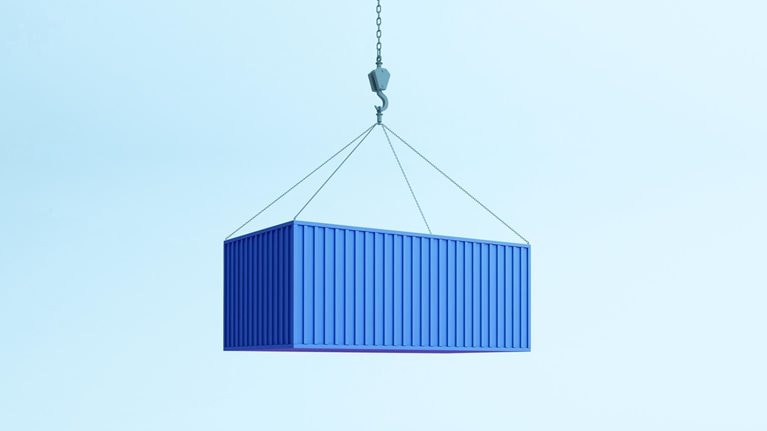
What is supply chain?

How business operations can respond to price increases: A CEO guide
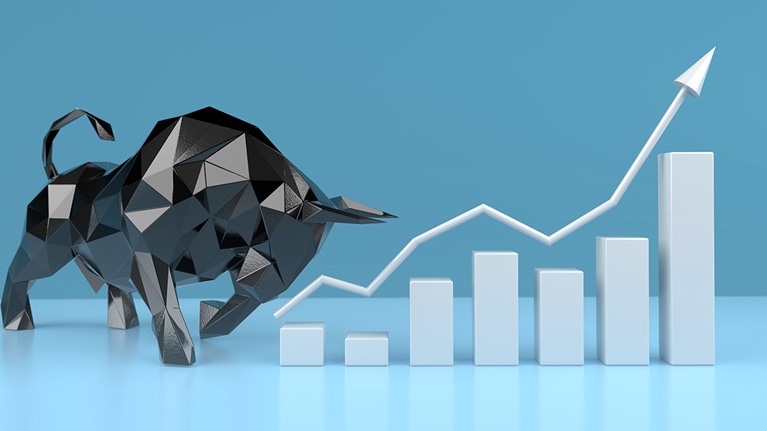
Five ways to ADAPT pricing to inflation

Presentations made painless
- Get Premium
100 Inflation Essay Topic Ideas & Examples
Inside This Article
Inflation is a key economic indicator that affects the purchasing power of consumers and the overall health of an economy. As such, it is a popular topic for essays and research papers in economics, finance, and related fields. If you are looking for inspiration for your next inflation essay, look no further. Here are 100 inflation essay topic ideas and examples to help you get started:
- The causes and effects of inflation
- The relationship between inflation and unemployment
- The impact of inflation on interest rates
- The role of the Federal Reserve in controlling inflation
- The differences between demand-pull and cost-push inflation
- The effects of hyperinflation on a country's economy
- The impact of inflation on fixed income earners
- The relationship between inflation and the stock market
- The effects of inflation on real estate prices
- The impact of inflation on international trade
- The role of inflation expectations in shaping economic behavior
- The effects of inflation on poverty and income inequality
- The impact of inflation on retirement savings
- The relationship between inflation and economic growth
- The effects of inflation on consumer spending
- The role of inflation in shaping monetary policy decisions
- The impact of inflation on business investment
- The effects of inflation on government finances
- The relationship between inflation and currency exchange rates
- The impact of inflation on the cost of living
- The effects of inflation on social welfare programs
- The role of inflation in causing economic recessions
- The impact of inflation on international competitiveness
- The effects of inflation on the environment
- The relationship between inflation and financial stability
- The role of inflation in shaping government policy decisions
- The impact of inflation on entrepreneurship and innovation
- The effects of inflation on consumer confidence
- The relationship between inflation and technological advancement
- The impact of inflation on the healthcare industry
- The effects of inflation on the education sector
- The role of inflation in shaping consumer behavior
- The impact of inflation on the agricultural sector
- The relationship between inflation and social mobility
- The effects of inflation on urban development
- The role of inflation in shaping labor market dynamics
- The impact of inflation on small businesses
- The effects of inflation on the tourism industry
- The relationship between inflation and government regulations
- The impact of inflation on infrastructure development
- The role of inflation in shaping energy policy
- The effects of inflation on the manufacturing sector
- The relationship between inflation and the digital economy
- The impact of inflation on the gig economy
- The effects of inflation on the sharing economy
- The role of inflation in shaping consumer preferences
- The impact of inflation on the automotive industry
- The relationship between inflation and the housing market
- The effects of inflation on the retail sector
- The impact of inflation on the hospitality industry
- The role of inflation in shaping supply chain dynamics
- The effects of inflation on the fashion industry
- The relationship between inflation and the art market
- The impact of inflation on the entertainment industry
- The effects of inflation on the music industry
- The role of inflation in shaping the sports industry
- The relationship between inflation and the gaming industry
- The impact of inflation on the film industry
- The effects of inflation on the publishing industry
- The role of inflation in shaping the food and beverage industry
- The impact of inflation on the beauty and personal care industry
- The effects of inflation on the health and wellness industry
- The relationship between inflation and the pharmaceutical industry
- The impact of inflation on the technology industry
- The effects of inflation on the telecommunications industry
- The role of inflation in shaping the media industry
- The relationship between inflation and the advertising industry
- The impact of inflation on the e-commerce industry
- The effects of inflation on the transportation industry
- The role of inflation in shaping the logistics industry
- The impact of inflation on the energy industry
- The effects of inflation on the renewable energy industry
- The relationship between inflation and the oil and gas industry
- The impact of inflation on the mining industry
- The effects of inflation on the construction industry
- The role of inflation in shaping the real estate industry
- The relationship between inflation and the property market
- The impact of inflation on the architecture and design industry
- The effects of inflation on the engineering industry
- The role of inflation in shaping the manufacturing industry
- The effects of inflation on the aerospace industry
- The relationship between inflation and the defense industry
- The impact of inflation on the security industry
- The effects of inflation on the law enforcement industry
- The role of inflation in shaping the healthcare industry
- The impact of inflation on the medical devices industry
- The effects of inflation on the biotechnology industry
- The role of inflation in shaping the life sciences industry
- The impact of inflation on the education industry
- The effects of inflation on the e-learning industry
- The relationship between inflation and the edtech industry
- The impact of inflation on the publishing industry
- The effects of inflation on the media and entertainment industry
- The role of inflation in shaping the sports and recreation industry
- The relationship between inflation and the leisure and travel industry
- The impact of inflation on the tourism and hospitality industry
- The effects of inflation on the food and beverage industry
- The role of inflation in shaping the retail and consumer goods industry
These are just a few examples of the many possible topics you could explore in an inflation essay. Whether you are interested in the macroeconomic implications of inflation or its effects on specific industries, there is no shortage of interesting and important questions to investigate. So pick a topic that interests you, do some research, and start writing!
Want to create a presentation now?
Instantly Create A Deck
Let PitchGrade do this for me
Hassle Free
We will create your text and designs for you. Sit back and relax while we do the work.
Explore More Content
- Privacy Policy
- Terms of Service
© 2023 Pitchgrade
Home — Essay Samples — Economics — Political Economy — Inflation
Essays on Inflation
Inflation essay topics and outline examples, essay title 1: understanding inflation: causes, effects, and economic policy responses.
Thesis Statement: This essay provides a comprehensive analysis of inflation, exploring its root causes, the economic and societal effects it generates, and the various policy measures employed by governments and central banks to manage and mitigate inflationary pressures.
- Introduction
- Defining Inflation: Concept and Measurement
- Causes of Inflation: Demand-Pull, Cost-Push, and Monetary Factors
- Effects of Inflation on Individuals, Businesses, and the Economy
- Inflationary Policies: Central Bank Actions and Government Interventions
- Case Studies: Historical Inflationary Periods and Their Consequences
- Challenges in Inflation Management: Balancing Growth and Price Stability
Essay Title 2: Inflation and Its Impact on Consumer Purchasing Power: A Closer Look at the Cost of Living
Thesis Statement: This essay focuses on the effects of inflation on consumer purchasing power, analyzing how rising prices affect the cost of living, household budgets, and the strategies individuals employ to cope with inflation-induced challenges.
- Inflation's Impact on Prices: Understanding the Cost of Living Index
- Consumer Behavior and Inflation: Adjustments in Spending Patterns
- Income Inequality and Inflation: Examining Disparities in Financial Resilience
- Financial Planning Strategies: Savings, Investments, and Inflation Hedges
- Government Interventions: Indexation, Wage Controls, and Social Programs
- The Global Perspective: Inflation in Different Economies and Regions
Essay Title 3: Hyperinflation and Economic Crises: Case Studies and Lessons from History
Thesis Statement: This essay explores hyperinflation as an extreme form of inflation, examines historical case studies of hyperinflationary crises, and draws lessons on the devastating economic and social consequences that result from unchecked inflationary pressures.
- Defining Hyperinflation: Thresholds and Characteristics
- Case Study 1: Weimar Republic (Germany) and the Hyperinflation of 1923
- Case Study 2: Zimbabwe's Hyperinflationary Collapse in the Late 2000s
- Impact on Society: Currency Devaluation, Poverty, and Social Unrest
- Responses and Recovery: Stabilizing Currencies and Rebuilding Economies
- Preventative Measures: Policies to Avoid Hyperinflationary Crises
The Impact of Inflation Reduction Act on The International Economic Stage
Inflation reduction act in the frame of macroeconomic challenges, made-to-order essay as fast as you need it.
Each essay is customized to cater to your unique preferences
+ experts online
The Oscillating Tides of The American Economy
Report on inflation and its causes, the rise of inflation rate in the us, iflation and its causes, let us write you an essay from scratch.
- 450+ experts on 30 subjects ready to help
- Custom essay delivered in as few as 3 hours
Methods to Control Inflation
The grade inflation, inflation: a deceitful solution to debt, how to control inflation in pakistan, get a personalized essay in under 3 hours.
Expert-written essays crafted with your exact needs in mind
Main Factors of Inflation in Singapore
Effects of inflation on commercial banks’ lending: a case of kenya commercial bank limited, food inflation in the republic of india, the issue of unemployment and inflation in colombia, the theory and policy of macroeconomics on inflation rate, socio-economic conditions in 'what is poverty' by jo goodwin parker, non-accelerating inflation rate of unemployment (nairu), targeting zero inflation and increase of government spending as a way of curbing recession, howa spiraling inflation has impacted the venezuelan economy, how venezuela has been affected by inflation, effects of inflation on kenya commercial banks lending, exploring theories of inflation in economics, about fuel prices: factors, impacts, and solutions, analyzing the inflation reduction act, exploring the implications of the inflation reduction act, relevant topics.
- Unemployment
- Penny Debate
- American Dream
- Real Estate
- Supply and Demand
- Minimum Wage
By clicking “Check Writers’ Offers”, you agree to our terms of service and privacy policy . We’ll occasionally send you promo and account related email
No need to pay just yet!
We use cookies to personalyze your web-site experience. By continuing we’ll assume you board with our cookie policy .
- Instructions Followed To The Letter
- Deadlines Met At Every Stage
- Unique And Plagiarism Free
Increasing Inflation Impact on Individuals Essay
Inflation refers to a general increase in the prices of basic commodities and services, usually taken to represent an average spending pattern (Mankiw, 2012). In simpler terms, inflation is the rise in the cost of living due to an exaggerated increase in commodity prices. As inflation sets in, both individuals, corporations, and the government usually feels its impacts. However, a significant increase in the level of inflation will cause numerous impacts on me as an individual.
Since inflation means a rise in prices of common and basic goods, my purchasing power will reduce since the income shall remain constant as prices rise up (Sexton, 2007). This is because the rate of inflation affects the currency’s purchasing power. As inflation rises, the value of the currency reduces proportionately or even at a higher rate pattern (Mankiw, 2012). Generally, the prevailing rate of inflation dictates the number of goods that I will be able to afford. As the cost of basic such as fuel prices, its trickle-down effects are manifold. The energy prices will increase the prices of foodstuffs such as grains since the machinery costs used in production shall have increased.
Because of a rise in the cost of living, it will lead to lower standards of living since inflation negatively influences the comfort of life. To demonstrate this impact, clearly, there shall be a shift from spending on leisure activities toward basic commodities.
Inflation influences budgeting and planning for investment. Ordinarily, inflation is a phenomenon that happens without the prior and perfect knowledge of an individual, and as such, planned budgets are affected. The confusion created by an uncertain increase in both costs and prices eventually hampers the planning process (Sexton, 2007). Similarly, the amount planned for investment will reduce hence causing a detriment in my overall investment base.
Inflation causes money to lose its value due to a rise in the price level. Since I am a regular saver, the rising inflation will affect me in the sense that I will lose confidence in the currency as a measure of value. This is because the rate of savings will be lower than the inflation resulting in a negative real interest rate on savings (Madura, 2006). For instance, if the per year inflation rate is at 6% while the nominal rate on savings is 3%, it means that the real interest rate on my savings is -3%.
The other effect of inflation will be tendencies of food shortages on the market occasioned by hoarding by sellers. Market analysis shows that an anticipated increase in inflation stimulates hoarding since sellers withhold goods with a view to selling at a higher price. Sellers will begin to cause physical scarcity of food and other products on the market since they would be anticipating better prices in the future (Sexton, 2007). As an individual, it will become difficult to access basic items, and if available, their prices will be excessively farther than what I can afford.
However, I will also be able to benefit from the government intervention plans and policy adjustments geared towards addressing inflation (Madura, 2006). The government’s policy to amend the nominal rates in order to cushion the savers will automatically be advantageous to me. As such, I will be motivated to increase my savings and investment in order to meet my future investment objectives.
Madura, J. (2006). Introduction to business . New York, NY: Cengage Learning.
Mankiw, N.G. (2012). Principles of macroeconomics (6 th .). Mason, OH: South-Western, Cengage Learning.
Sexton, R. L. (2007). Exploring Economics . New York, NY: Cengage Learning.
- Chicago (A-D)
- Chicago (N-B)
IvyPanda. (2021, January 23). Increasing Inflation Impact on Individuals. https://ivypanda.com/essays/increasing-inflation-impact-on-individuals/
"Increasing Inflation Impact on Individuals." IvyPanda , 23 Jan. 2021, ivypanda.com/essays/increasing-inflation-impact-on-individuals/.
IvyPanda . (2021) 'Increasing Inflation Impact on Individuals'. 23 January.
IvyPanda . 2021. "Increasing Inflation Impact on Individuals." January 23, 2021. https://ivypanda.com/essays/increasing-inflation-impact-on-individuals/.
1. IvyPanda . "Increasing Inflation Impact on Individuals." January 23, 2021. https://ivypanda.com/essays/increasing-inflation-impact-on-individuals/.
Bibliography
IvyPanda . "Increasing Inflation Impact on Individuals." January 23, 2021. https://ivypanda.com/essays/increasing-inflation-impact-on-individuals/.
- Animal Hoarding Reasons and Effects
- Cash Hoarding by U.S Firms
- The Compulsive Hoarding Concept
- Racial Inequality and Hoarding: A Public Health Issue
- Real and Nominal Gdp
- Obsessive-Compulsive Disorder Diagnostics
- The real exchange rate and the nominal exchange rate
- Nominal versus Real Gross Domestic Product
- Nominal and Real GDP Growth Rates
- Economic Issues: Real and Nominal Variables
- Maintenance of Stable Pricing
- Inflation Expectations: Households and Forecasters
- Macroeconomic Elements: the Reduction of Oil Prices
- Inflation Targeting in Emerging Economies
- United Arab Emirates and Norway Economies
- Plutus Foundation
- The Plutus Awards
- Plutus Impact Summit
- Plutus Voices

- Our Mission
- Latest Updates
- Submit Your Grant Proposal
- Women’s Personal Finance Access for All
- Yo Quiero Generational Wealth
- Prior Grants
- Clear Money Camp
- Economic Independence: Youth Anthology and Workshop
- Elevate Investing
- Future Millionaire Money Camp for Kids
- WealthSavers Closing the Gap
- Partner With Us
- Plutus Community on Facebook
- Plutus Impact Series
- Community Calendar
- Plutus Awards Jobs Exchange
How to Write About Inflation
Daniella flores.
- March 8, 2022
- Blogging and Podcasting
Ugh, inflation.
If you’re anything like me, you cringe at the sight of the word. To me, it means things are getting more expensive and who loves that? No one, especially not my budget .
It’s 2022, we’re entering the 3rd year of a global pandemic, and inflation is the highest since 1982 according to Trading Economics .
You can watch all the news channels, read all the financial news articles, or even talk to your angry uncle about how inflation is out of control because “Uncle Sam is screwing us again”, but after all of that you are left pretty clueless to what it even is and how it might be affecting your own life.
As we dive into how to write about inflation, let’s get clear on what exactly inflation is, what causes it, how it affects you, and who is profiting from all of it.
What is Inflation?
Inflation is a measure of the rate of rising prices of the goods and services in an economy. When prices rise, the purchasing power of your money decreases.
The purchasing power of our dollar goes down because we have to use more dollars to meet those rising prices. Ultimately, the less we are able to purchase with our dollars the more inflation rises.

What Causes Inflation?
There are several factors that can drive prices upward in an economy. Typically, inflation can result from an increase in production costs or an increase in demand for products and services.
Some of the various factors that drive inflation include:
- Cost-push inflation: When production costs increase due to increase in raw materials or wages, prices for those products or services increase.
- Demand-pull inflation: When there is a strong consumer demand for a product or service, the prices will increase.
- The housing market: When the demand for housing increases, home prices will rise.
- Expansionary fiscal policy: Fiscal policy is how the government adjusts its spending and tax rates to monitor and influence the economy.
How to Write About Inflation?
When writing about inflation, you have to know your audience and who you’re talking to. Inflation has several nuances of impact depending on the sector and personal experience.
It’s best to simplify it down as much as you can when talking to your audience and do so without bias.
To break inflation down in terms that a 5 year old can understand, I spoke with someone who is much more qualified and experienced on the subject, Jonathan Thomas M.B.A., who is a Financial Coach and the host of Money Talks , a YouTube channel that helps folks to turn their financial goals into day to day decisions.
Jonathan simplifies inflation as “Inflation means everything costs more to produce. When I was a kid a cheeseburger cost me 50 cents at McDonald’s. Every year the cost rose on food like bread, meat, cheese, etc. Because the cost to make a cheeseburger went up, McDonald’s had to raise the price. Now a cheeseburger costs $1.59.”
Give Examples in Your Writing, Especially for Those More Complicated Experiences of Inflation
When talking about inflation, it’s best to pair examples and analogies like Jonathan did to help the reader better understand it, how it affects them, and how it might affect those around them.
For instance, an example from my own life is the experience of the rise of housing costs from one end of the country to the other during the height of Covid-19 in 2020 which could illustrate a more complex form of inflation.
My wife and I moved across the country in December 2020 after we both became location independent, meaning we could work from anywhere. We weren’t the only people that did this in the last couple of years.
In fact, 15.9 million people had already moved by the time we did and their decision to move was influenced by the pandemic in one way or another. Some of those people had to move because of rising rent costs and other financial reasons like job loss. Others feared getting Covid-19 where they lived or wanted to move to be closer to family.
This drove the price of housing up and fast.
We moved from St. Louis, Missouri where the housing prices are below the national average, to a small town in Washington state where the housing is much higher. We went from a $100k house to almost a $300k house.
Our real estate broker explained that because so many people in the larger cities were moving to rural areas like the one we were moving to, this sort of mass migration drove the demand for housing up.
At the same time with increasing demand, there was a smaller inventory of affordable housing available and few new building projects for that same category of affordable housing in the area. This created a seller’s market with bidding wars on new available listings sometimes starting as soon as the house was listed.
Folks were buying houses without ever looking at them, waiving inspections, and due to bidding wars would offer sometimes as much as $50k over asking price for the same house you’d find in St. Louis, MO for $200k less.
Jonathan explains that a part of this equation is “Demand increased for real estate so the cost of lumber increased as there wasn’t enough available for everyone to keep building.”
The other part includes the Federal Reserve’s influence on interest rates that kept mortgage rates low during this time as well, surging that housing demand even higher as it meant American’s could secure mortgages at the lowest interest rate in history in December 2020 – 2.68%.
Framing Inflation as Good or Bad
Inflation can be both good and bad. However, how you write about inflation must take into account your reader’s experience with their current financial situation and how inflation might be impacting that experience.
For instance, if you say inflation is good because it means people can make more money and their assets can build wealth quicker, your reader may not resonate with that same perspective.
If your reader had a house in Washington at the height of the seller’s market last year, they would’ve seen that inflation as a good thing for them because it increased the value of their own house. Some folks could sell their house for as much as $500,000 more than what they bought it for.
Then there were folks on the other side of that fence where they were ready to purchase their first home that year, and found nothing they could afford. Or they lost a job and couldn’t afford rent anymore. So, they had to leave their home to move somewhere cheaper to turn around and see the landlord listing their home for half the price after so they could fill the unit with a tenant.
It’s also because of the rate of inflation since then that folks are seeing those same discounted rents, now going back up.
Inflation can be good and bad for everyone. Be mindful of how you frame it to your audience.
Conclusion: How Well Do You Know Your Audience?
When you discuss any sort of financial topic, it is crucial that you know exactly who you’re talking to. People have charged reactions to reading financial content because of how personal and political money is. Charge them up in a positive way, not a negative one.
Start with a simple audience persona which you can use a template like the one found here . Ask yourself what are the most common problems that your audience might have with inflation and then speak to those problems when covering the topic.
If you know your audience, writing about inflation is going to be a breeze.

Related Posts

5 Podcasting Pros Share How to Start a Podcast
You’re inspired and ready to dive right in — but where do you start? Learning about the process of podcasting can help you fully understand what it will take to build a sustainable project on your own. Here’s what you need to know to define your goals and decide if a podcast is truly the right medium and platform for you or your business.

These 48 Women Are Making a Difference in Financial Literacy (Updated)
The Plutus Foundation supports women advocating for financial education and literacy. These women are making a difference today.

11 Tips to Grow Your Business During Hard Times
This is a guest article by Kylie Travers, an award-winning blogger, author, speaker, and writer. She is based in Australia, with her four children. She has a real passion for helping others, raising awareness and
Leave a Reply Cancel reply

The Plutus Foundation
6024 Ridge Ave, Suite 116-148 Philadelphia, PA 19128
(844) 4-PLUTUS
Send us a message.
Upcoming Events
- There are no upcoming events.

plutusawards
🏆Supporting PF content creators in every way possible! Award Show | Impact Summit | Grants | Happy Hour 🏆 #financialliteracy #personalfinance

Privacy Policy — Copyright © 2009-2023 Plutus Foundation Inc. — Plutus® is a registered trademark of the Plutus Foundation
Follow or subscribe to the
Plutus awards podcast.

Join us for #plutuschat on Twitter
You must register here to qualify for the giveaway, note: there are no currently scheduled plutuschats..

- Entertainment
- Investigations
- Latest Headlines
- Law Office Shooting
- What Are They Hiding?
- 2024 Election
- Clark County
- Nation and World
- Science and Technology
- Road Warrior
- Las Vegas Weather
- East Valley
- North Las Vegas
- Summerlin/Centennial Hills
- Remembering Oct. 1, 2017
- Deborah Wall
- Natalie Burt
- Remembering Jeff German
- Police Accountability
- Alpine Fire
- 100 Years of Growth
- Dangerous Driving
- Raiders News
- Golden Knights
- UNLV Football
- UNLV Basketball
- Nevada Preps
- Sports Betting 101
- Las Vegas Sportsbooks
- National Finals Rodeo
- Where Are They Now?
- On TV/Radio
- MMA and UFC
- Casinos & Gaming
- Conventions
- Inside Gaming
- Entrepreneurs
- Real Estate News
- Business Press
- Sheldon Adelson (1933-2021)
- Debra J. Saunders
- Michael Ramirez cartoons
- Victor Joecks
- Richard A. Epstein
- Victor Davis Hanson
- Drawing Board
- Homicide Tracker
- Faces of Death Row
- Kats’ Cool Hangs
- Arts & Culture
- Home and Garden
- Las Vegas Hiking Guide
- RJ Magazine
- Today’s Obituaries
- Submit an obit
- Dealer News
- Classifieds
- Place a Classified Ad
- Provided Content
- Real Estate Millions
- Internships
- Service Directory
- Transportation
- Merchandise
- Legal Information
- Real Estate Classifieds
- Garage Sales
- Contests and Promotions
- Best of Las Vegas
- Nevada State Bank
- Verizon Business
- P3 Health Partners
- Adult Health
- Star Nursery
- Partner Articles
- Ignite Funding
- Supplements
- Travel Nevada
- Subscriptions
- Newsletters
- Advertise with Us
- >> Opinion
CARTOONS: Inflation and the US economy
Take a look at these editorial cartoons from across the U.S. and world.
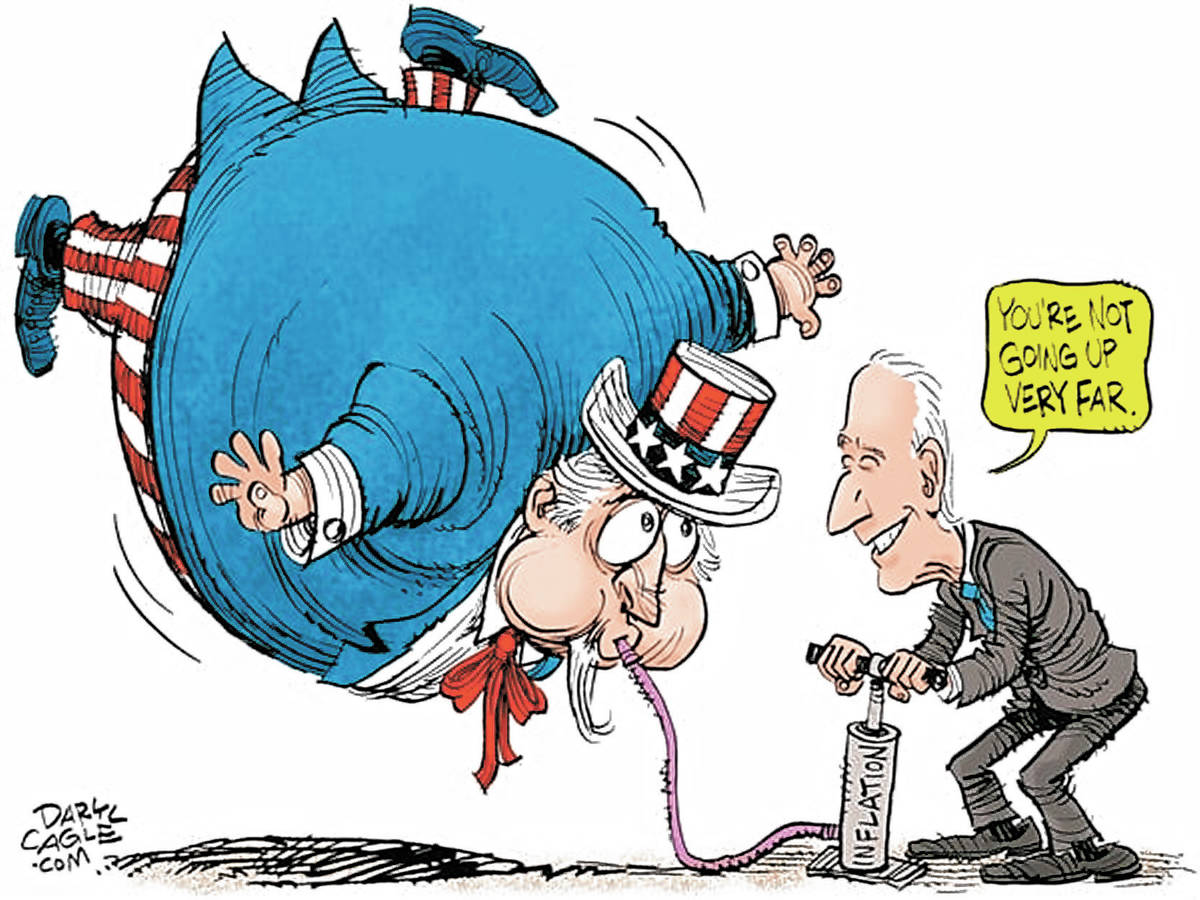

Pointing fingers over his indictments.
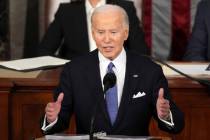
On foreign affairs, president is a failure.

While the taxpayers cover their education.
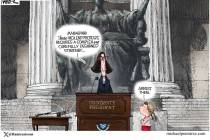
Simple solution.

What are the odds?

Warnings about the agenda of global warming alarmists can seem farfetched. But what’s happening in Germany shows that isn’t the case.
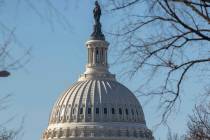
New economic projections warn that U.S. debt, $34.4 trillion, will reach 107 percent of the nation’s gross domestic product in five years.
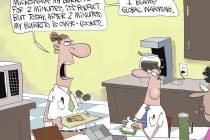
Take a look at some editorial cartoons from across the U.S. and world.

Metro has enough on its plate.

Saving the planet through government mandates.
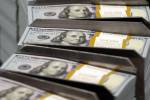
Freedom for the Wolves
Neoliberal orthodoxy holds that economic freedom is the basis of every other kind. That orthodoxy, a Nobel economist says, is not only false; it is devouring itself.

A ny discussion of freedom must begin with a discussion of whose freedom we’re talking about. The freedom of some to harm others, or the freedom of others not to be harmed? Too often, we have not balanced the equation well: gun owners versus victims of gun violence; chemical companies versus the millions who suffer from toxic pollution; monopolistic drug companies versus patients who die or whose health worsens because they can’t afford to buy medicine.
Understanding the meaning of freedom is central to creating an economic and political system that delivers not only on efficiency, equity, and sustainability but also on moral values. Freedom—understood as having inherent ties to notions of equity, justice, and well-being—is itself a central value. And it is this broad notion of freedom that has been given short shrift by powerful strands in modern economic thinking—notably the one that goes by the shorthand term neoliberalism , the belief that the freedom that matters most, and from which other freedoms indeed flow, is the freedom of unregulated, unfettered markets.
F. A. Hayek and Milton Friedman were the most notable 20th-century defenders of unrestrained capitalism. The idea of “unfettered markets”—markets without rules and regulations—is an oxymoron because without rules and regulations enforced by government, there could and would be little trade. Cheating would be rampant, trust low. A world without restraints would be a jungle in which only power mattered, determining who got what and who did what. It wouldn’t be a market at all.

Nonetheless, Hayek and Friedman argued that capitalism as they interpreted it, with free and unfettered markets, was the best system in terms of efficiency, and that without free markets and free enterprise, we could not and would not have individual freedom. They believed that markets on their own would somehow remain competitive. Remarkably, they had already forgotten—or ignored—the experiences of monopolization and concentration of economic power that had led to the Sherman Antitrust Act (1890) and the Clayton Antitrust Act (1914). As government intervention grew in response to the Great Depression, Hayek worried that we were on “the road to serfdom,” as he put it in his 1944 book of that title; that is, on the road to a society in which individuals would become subservient to the state.
Rogé Karma: Why America abandoned the greatest economy in history
My own conclusions have been radically different. It was because of democratic demands that democratic governments, such as that of the U.S., responded to the Great Depression through collective action. The failure of governments to respond adequately to soaring unemployment in Germany led to the rise of Hitler. Today, it is neoliberalism that has brought massive inequalities and provided fertile ground for dangerous populists. Neoliberalism’s grim record includes freeing financial markets to precipitate the largest financial crisis in three-quarters of a century, freeing international trade to accelerate deindustrialization, and freeing corporations to exploit consumers, workers, and the environment alike. Contrary to what Friedman suggested in his 1962 book, Capitalism and Freedom , this form of capitalism does not enhance freedom in our society. Instead, it has led to the freedom of a few at the expense of the many. As Isaiah Berlin would have it: Freedom for the wolves; death for the sheep.
I t is remarkable that , in spite of all the failures and inequities of the current system, so many people still champion the idea of an unfettered free-market economy. This despite the daily frustrations of dealing with health-care companies, insurance companies, credit-card companies, telephone companies, landlords, airlines, and every other manifestation of modern society. When there’s a problem, ordinary citizens are told by prominent voices to “leave it to the market.” They’ve even been told that the market can solve problems that one might have thought would require society-wide action and coordination, some larger sense of the public good, and some measure of compulsion. It’s purely wishful thinking. And it’s only one side of the fairy tale. The other side is that the market is efficient and wise, and that government is inefficient and rapacious.
Mindsets, once created, are hard to change. Many Americans still think of the United States as a land of opportunity. They still believe in something called the American dream, even though for decades the statistics have painted a darker picture. The rate of absolute income mobility—that is, the percentage of children who earn more than their parents—has been declining steadily since the Second World War. Of course, America should aspire to be a land of opportunity, but clinging to beliefs that are not supported by today’s realities—and that hold that markets by themselves are a solution to today’s problems—is not helpful. Economic conditions bear this out, as more Americans are coming to understand. Unfettered markets have created, or helped create, many of the central problems we face, including manifold inequalities, the climate crisis, and the opioid crisis. And markets by themselves cannot solve any of our large, collective problems. They cannot manage the massive structural changes that we are going through—including global warming, artificial intelligence, and the realignment of geopolitics.
All of these issues present inconvenient truths to the free-market mindset. If externalities such as these are important, then collective action is important. But how to come to collective agreement about the regulations that govern society? Small communities can sometimes achieve a broad consensus, though typically far from unanimity. Larger societies have a harder go of it. Many of the crucial values and presumptions at play are what economists, philosophers, and mathematicians refer to as “primitives”—underlying assumptions that, although they can be debated, cannot be resolved. In America today we are divided over such assumptions, and the divisions have widened.
The consequences of neoliberalism point to part of the reason: specifically, growing income and wealth disparities and the polarization caused by the media. In theory, economic freedom was supposed to be the bedrock basis for political freedom and democratic health. The opposite has proved to be true. The rich and the elites have a disproportionate voice in shaping both government policies and societal narratives. All of which leads to an enhanced sense by those who are not wealthy that the system is rigged and unfair, which makes healing divisions all the more difficult.
Chris Murphy: The wreckage of neoliberalism
As income inequalities grow, people wind up living in different worlds. They don’t interact. A large body of evidence shows that economic segregation is widening and has consequences, for instance, with regard to how each side thinks and feels about the other. The poorest members of society see the world as stacked against them and give up on their aspirations; the wealthiest develop a sense of entitlement, and their wealth helps ensure that the system stays as it is.
The media, including social media, provide another source of division. More and more in the hands of a very few, the media have immense power to shape societal narratives and have played an obvious role in polarization. The business model of much of the media entails stoking divides. Fox News, for instance, discovered that it was better to have a devoted right-wing audience that watched only Fox than to have a broader audience attracted to more balanced reporting. Social-media companies have discovered that it’s profitable to get engagement through enragement. Social-media sites can develop their algorithms to effectively refine whom to target even if that means providing different information to different users.
N eoliberal theorists and their beneficiaries may be happy to live with all this. They are doing very well by it. They forget that, for all the rhetoric, free markets can’t function without strong democracies beneath them—the kind of democracies that neoliberalism puts under threat. In a very direct way, neoliberal capitalism is devouring itself.
Not only are neoliberal economies inefficient at dealing with collective issues, but neoliberalism as an economic system is not sustainable on its own. To take one fundamental element: A market economy runs on trust. Adam Smith himself emphasized the importance of trust, recognizing that society couldn’t survive if people brazenly followed their own self-interest rather than good codes of conduct:
The regard to those general rules of conduct, is what is properly called a sense of duty, a principle of the greatest consequence in human life, and the only principle by which the bulk of mankind are capable of directing their actions … Upon the tolerable observance of these duties, depends the very existence of human society, which would crumble into nothing if mankind were not generally impressed with a reverence for those important rules of conduct.
For instance, contracts have to be honored. The cost of enforcing every single contract through the courts would be unbearable. And with no trust in the future, why would anybody save or invest? The incentives of neoliberal capitalism focus on self-interest and material well-being, and have done much to weaken trust. Without adequate regulation, too many people, in the pursuit of their own self-interest, will conduct themselves in an untrustworthy way, sliding to the edge of what is legal, overstepping the bounds of what is moral. Neoliberalism helps create selfish and untrustworthy people. A “businessman” like Donald Trump can flourish for years, even decades, taking advantage of others. If Trump were the norm rather than the exception, commerce and industry would grind to a halt.
We also need regulations and laws to make sure that there are no concentrations of economic power. Business seeks to collude and would do so even more in the absence of antitrust laws. But even playing within current guardrails, there’s a strong tendency for the agglomeration of power. The neoliberal ideal of free, competitive markets would, without government intervention, be evanescent.
We’ve also seen that those with power too often do whatever they can to maintain it. They write the rules to sustain and enhance power, not to curb or diminish it. Competition laws are eviscerated. Enforcement of banking and environmental laws is weakened. In this world of neoliberal capitalism, wealth and power are ever ascendant.
Neoliberalism undermines the sustainability of democracy—the opposite of what Hayek and Friedman intended or claimed. We have created a vicious circle of economic and political inequality, one that locks in more freedom for the rich and leaves less for the poor, at least in the United States, where money plays such a large role in politics.
Read: When Milton Friedman ran the show
There are many ways in which economic power gets translated into political power and undermines the fundamental democratic value of one person casting one vote. The reality is that some people’s voices are much louder than others. In some countries, accruing power is as crude as literally buying votes, with the wealthy having more money to buy more votes. In advanced countries, the wealthy use their influence in the media and elsewhere to create self-serving narratives that in turn become the conventional wisdom. For instance, certain rules and regulations and government interventions—tax cuts for the wealthiest Americans, deregulation of key industries—that are purely in the interest of the rich and powerful are also, it is said, in the national interest. Too often that viewpoint is swallowed wholesale. If persuasion doesn’t work, there is always fear: If the banks are not bailed out, the economic system will collapse, and everyone will be worse off. If the corporate tax rate is not cut, firms will leave and go to other jurisdictions that are more business-friendly.
Is a free society one in which a few dictate the terms of engagement? In which a few control the major media and use that control to decide what the populace sees and hears? We now inhabit a polarized world in which different groups live in different universes, disagreeing not only on values but on facts.
A strong democracy can’t be sustained by neoliberal economics for a further reason. Neoliberalism has given rise to enormous “rents”—the monopoly profits that are a major source of today’s inequalities. Much is at stake, especially for many in the top one percent, centered on the enormous accretion of wealth that the system has allowed. Democracy requires compromise if it is to remain functional, but compromise is difficult when there is so much at stake in terms of both economic and political power.
A free-market, competitive, neoliberal economy combined with a liberal democracy does not constitute a stable equilibrium—not without strong guardrails and a broad societal consensus on the need to curb wealth inequality and money’s role in politics. The guardrails come in many forms, such as competition policy, to prevent the creation, maintenance, and abuse of market power. We need checks and balances, not just within government, as every schoolchild in the U.S. learns, but more broadly within society. Strong democracy, with widespread participation, is also part of what is required, which means working to strike down laws intended to decrease democratic participation or to gerrymander districts where politicians will never lose their seats.
Whether America’s political and economic system today has enough safeguards to sustain economic and political freedoms is open to serious question.
U nder the very name of freedom, neoliberals and their allies on the radical right have advocated policies that restrict the opportunities and freedoms, both political and economic, of the many in favor of the few. All these failures have hurt large numbers of people around the world, many of whom have responded by turning to populism, drawn to authoritarian figures like Trump, Jair Bolsonaro, Vladimir Putin, and Narendra Modi.
Perhaps we should not be surprised by where the U.S. has landed. It is a country now so divided that even a peaceful transition of power is difficult, where life expectancy is the lowest among advanced nations, and where we can’t agree about truth or how it might best be ascertained or verified. Conspiracy theories abound. The values of the Enlightenment have to be relitigated daily.
There are good reasons to worry whether America’s form of ersatz capitalism and flawed democracy is sustainable. The incongruities between lofty ideals and stark realities are too great. It’s a political system that claims to cherish freedom above all else but in many ways is structured to deny or restrict freedoms for many of its citizens.
I do believe that there is broad consensus on key elements of what constitutes a good and decent society, and on what kind of economic system supports that society. A good society, for instance, must live in harmony with nature. Our current capitalism has made a mess of this. A good society allows individuals to flourish and live up to their potential. In terms of education alone, our current capitalism is failing large portions of the population. A good economic system would encourage people to be honest and empathetic, and foster the ability to cooperate with others. The current capitalist system encourages the antithesis.
But the key first step is changing our mindset. Friedman and Hayek argued that economic and political freedoms are intimately connected, with the former necessary for the latter. But the economic system that has evolved—largely under the influence of these thinkers and others like them—undermines meaningful democracy and political freedom. In the end, it will undermine the very neoliberalism that has served them so well.
For a long time, the right has tried to establish a monopoly over the invocation of freedom , almost as a trademark. It’s time to reclaim the word.
This article has been adapted from Joseph E. Stiglitz’s new book, The Road to Freedom: Economics and the Good Society .

When you buy a book using a link on this page, we receive a commission. Thank you for supporting The Atlantic.
Support for this project was provided by the William and Flora Hewlett Foundation.
Annual inflation slows to 3.6 per cent as higher than expected price rise in March quarter rules out early rate cut hopes
Inflation has come in higher than expected during the March quarter, dampening expectations of interest rate cuts later in the year.
The latest Consumer Price Index data from the Australian Bureau of Statistics showed prices increased by 1 per cent during the March quarter, leaving the annual inflation rate at 3.6 per cent.
Economists had expected inflation to increase by 0.8 per cent in the March quarter, and by 3.5 per cent annually.
Despite prices increasing by 1 per cent during the first three months of the year, the ABS's head of price statistics, Michele Marquardt, said annual inflation is continuing to fall from its peak in 2022.
"While prices continued to rise for most goods and services, annual CPI inflation was down from 4.1 per cent last quarter and has fallen from the peak of 7.8 per cent in December 2022," she said.
Although inflation is moderating, Wednesday's data has reduced the likelihood of the Reserve Bank of Australia cutting interest rates later this year.
"We still think that the next move from the RBA will be a cut rather than a hike, we know that the current cash rate is in restrictive territory, but we also think that activity will start to improve this year as well," said Catherine Birch, a senior economist at ANZ.
"You can't write off the possibility of the next move being a hike rather than a cut, but we think it's a low possibility at this stage."
AMP deputy chief economist Diana Mousina agrees that the data for the March quarter has effectively ruled out rate cuts in the coming months.
"This inflation data will certainly renew some of that debate around whether we actually need to see higher interest rates," Ms Mousina said.
"We don't think we will see a further rate hike from here, I just don't think it's necessary, but the quarterly inflation data does mean that the risk of a near-term rate cut has absolutely disappeared."
Rising insurance premiums and childcare fees
The ABS data showed that education, health, housing and food were the "most significant" contributors to the increase during the March quarter, with the quarterly rise in housing mostly driven by rents and new homes purchased by owner-occupiers.
Insurance premiums rose by 16.4 per cent annually — making it the strongest annual increase in 23 years.
Childcare prices also rose by 3.9 per cent in the March quarter, with Commonwealth Bank economist Stephen Wu noting "the increase in childcare subsidies only has a temporary impact on households' out-of-pocket expenses because of subsequent fee increases".
"Fee increases over the past two quarters have been large and have halved the benefit from higher subsidies introduced just six months ago," he said.
Wednesday's data also showed pharmaceutical products had increased by 7.1 per cent in the first three months of the year, which the ABS attributed to the annual resetting of the Medicare Safety Net and Pharmaceutical Benefits Scheme on January 1.
"While pharmaceuticals normally rise solidly in the March quarter and subsequently fall over the following quarters, this was the largest increase in more than a decade," Mr Wu said.
Recreation and culture prices also declined by 0.1 per cent in the March quarter, and were essentially flat over the year.
Meanwhile, underlying inflation, which is the Reserve Bank of Australia's preferred measure of inflation, was 4 per cent over the past year — down from 4.2 per cent in the December quarter.
Although prices are moderating in some categories and falling in others, Ms Birch said the RBA would be particularly concerned by an uptick in services inflation.
"What's quite concerning is that services inflation has actually accelerated on a quarterly basis and non-tradeables inflation (including rents, education and insurance) is still running too high as well, and they will certainly be in focus for the RBA," she said.
When will rates start being cut?
Callam Pickering, economist at global job site Indeed, said Wednesday's data is proof that inflation remains a key challenge for the economy.
"While inflation is coming down, consumer prices rose faster in early 2024 than anticipated, it's a sobering reminder that the battle against inflation isn't yet won," he said.
"These figures suggest that inflation may be above the RBA's inflation expectations by mid-year, which reduces the probability of a rate cut this year.
"In their February Statement on Monetary Policy, the RBA expected headline inflation to be 3.3 per cent by mid-year but following the March figures it's difficult to see that being achieved."
Westpac chief economist and former RBA assistant governor Luci Ellis expects the central bank will keep biding its time and leave rates unchanged at its meeting in May.
"We ... do not expect any change to the messaging about not ruling anything in or out for another few months," she said.
"Given the slower progress on disinflation this quarter ... we now expect the first rate cut to occur after the November meeting, rather than September as previously expected."
However, chief economist at IMF, Alex Joiner, said the data went against the central bank's assertion in March that inflation had been coming in "broadly as expected" and makes "late year rate cuts even more uncertain".
"While inflation moving towards the RBA's target is positive, it does not solve the cost of living concerns impacting the consumer," he said.
"Inflation is cumulative. Prices, as measured by the CPI, are up 20.4 per cent since mid 2019 and it will take a prolonged period of real wage growth before households feel at all comfortable with what is a permanently higher average price level."
Cost-of-living challenges in focus ahead of budget
The higher-than-expected increase to consumer prices in the March quarter comes as Treasurer Jim Chalmers finalises the upcoming federal budget ahead of its delivery on May 14.
Mr Chalmers said while Wednesday's figures showed the economy was making "progress" against inflation, the annual rate of 3.6 per cent was "still too high".
"It is encouraging to see inflation continue to ease in our economy, particularly when it is ticking up in other parts of the world and at a time of heightened global uncertainty, made worse by the recent escalation of the conflict in the Middle East," he said.
"The impact of these global factors and the shifting balance of risks from inflation to growth are key considerations as we finalise the budget over the coming weeks."
Mr Chalmers reiterated that the upcoming budget would "seek to balance the ongoing fight against inflation with the need to gear our economy for growth".
Shadow Treasurer Angus Taylor said Wednesday's consumer price data showed inflation was "too high", and accused the government of not "taking inflation seriously" with three weeks to go before handing down the federal budget.
However, Mr Chalmers signalled the upcoming stage 3 tax cuts, due to come into effect on July 1, would provide cost-of-living relief for households, and did not rule out the possibility of additional measures in the budget.
"We will consider additional help on top of that if it's affordable, if it's responsible and if it helps take some of the edge off inflation in our economy," he said.
But the looming stage 3 tax cuts pose a risk to inflation and the RBA's rate cut timeline, according to Moody's Analytics economist Harry Murphy Cruise.
"Those tax cuts will add money to the economy at the same time the RBA is trying to take it out," he said.
"What's more, a chunk of progress on inflation has come from temporary government rebates that will eventually unwind.
"Those aren't deal-breakers for the RBA, but they will delay rate cuts.
"We had expected the first rate cut to come in September. Increasingly, it's looking like we'll have to wait until November."
If you're unable to view the form, you can access it here .
- X (formerly Twitter)
- Consumer Finance
- Cost of Living
- Economic Trends
- Financial Markets
- Interest Rates
- Money and Monetary Policy
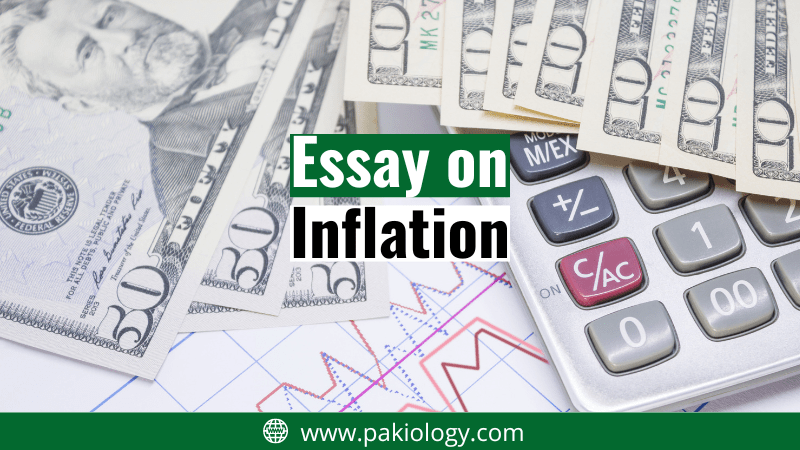
Essay on Inflation in Pakistan for Students
by Pakiology | Apr 21, 2024 | Essay | 0 comments
In this essay on inflation in Pakistan, we will look at the causes, effects, and solutions to this issue that has been affecting the country for decades. The term ‘inflation’ refers to a sustained rise in the prices of goods and services in an economy. In Pakistan, inflation has been a major concern since the late 1990s, with the Consumer Price Index (CPI) reaching a peak in 2023. We will explore the various factors that have contributed to inflation in Pakistan, its economic effects, and what can be done to address the issue.
Page Contents
Essay on Inflation Outlines
Causes of inflation in pakistan, effects of inflation, solution to control inflation.
- Introduction
Inflation in Pakistan is caused by several factors, which can be divided into two main categories: domestic and external. The main domestic causes of inflation are an increase in money supply, an increase in government spending, an increase in indirect taxes, and a decrease in economic growth.
The most significant contributor to inflation in Pakistan is an increase in the money supply. When there is too much money chasing after too few goods, prices rise, creating a situation known as demand-pull inflation. An increase in the money supply can be caused by the central bank printing more money or by the government borrowing more money from the public.
In addition, higher government spending can lead to inflation. This occurs when the government prints more money to finance its expenditure or borrows from the public and transfers the cost of this additional spending to businesses and consumers. This leads to higher prices for goods and services. Indirect taxes are another major factor that contributes to inflation in Pakistan. When indirect taxes are increased, prices of goods and services also increase, leading to an overall rise in prices.
Finally, low economic growth can also cause inflation in Pakistan. A weak economy reduces people’s purchasing power, forcing them to buy less, which reduces demand and leads to lower prices. However, when economic growth stalls, businesses are unable to sell their products at the same price as before, leading to a rise in prices.
Overall, inflation in Pakistan is caused by a combination of domestic and external factors. These include an increase in money supply, higher government spending, increases in indirect taxes, and a decrease in economic growth.
The effects of inflation on the economy can be both positive and negative. Inflation erodes the purchasing power of money, meaning that each unit of currency is worth less than it was before. This means that, as the cost of living increases, people can purchase fewer goods and services for the same amount of money. As a result, their standard of living decreases.
Inflation also reduces the real return on investments and savings, which can have a detrimental effect on economic growth. When inflation is high, people prefer to save their money rather than invest in a business or other activities. This reduces the availability of capital and results in slower economic growth.
In addition to decreasing standards of living, inflation can lead to unemployment if companies are not able to increase wages at the same rate as prices rise. This can lead to an increase in poverty, as people struggle to afford necessities. Furthermore, when prices rise faster than wages, it puts pressure on government budgets and can increase public debt.
Inflation can also cause the value of the local currency to depreciate against foreign currencies. This has a direct impact on the cost of imports and makes domestic goods less competitive in international markets. It can also have an indirect impact on exports, as it reduces the competitiveness of local producers in foreign markets.
Inflation is a serious issue in Pakistan, and it needs to be addressed to improve the country’s economic conditions. The following are some of the measures that can be taken to control inflation in Pakistan:
1. Fiscal policy: A strong fiscal policy is necessary for controlling inflation. The government should increase its revenue by implementing taxes on the wealthy and reducing public spending. This will help reduce budget deficits, which will result in lower inflation.
2. Monetary policy: The State Bank of Pakistan should adopt a tighter monetary policy to control inflation. It should raise interest rates so that investors have an incentive to save rather than spend, thus curbing demand-pull inflation.
3. Supply-side measures: There should be an increase in the production of essential commodities and products to meet the demand of consumers. This will help reduce prices and inflation in the long run.
4. Subsidies: The government should provide subsidies to those who are suffering due to the high prices of essential items. This will help them cope with the rising cost of living and ensure that they have access to essential goods and services.
5. Stabilizing exchange rate: A stable exchange rate between foreign currencies and the rupee is necessary for controlling inflation. The State Bank of Pakistan should strive to keep the rupee’s value stable by using currency swaps and other methods.
These measures can go a long way in controlling inflation in Pakistan. By taking these measures, the government can help improve the country’s economic condition and create an environment conducive to investment and growth.
What is inflation in simple words?
Inflation is a sustained increase in the general price level of goods and services in an economy over a period of time.
What are the 4 main causes of inflation?
The 4 main causes of inflation are: Demand-pull inflation: when there is an increase in demand for goods and services that outstrip the economy’s ability to produce them. Cost-push inflation: when the cost of production increases, causing companies to raise prices to maintain their profit margins. Built-in inflation: when businesses expect prices to rise and build that expectation into their prices, causing a self-fulfilling cycle of inflation. Imported inflation: when the cost of imported goods increases, leading to higher prices for consumers.
What are the 5 main causes of inflation?
The 4 main causes of inflation are: 1. Demand-pull inflation 2. Cost-push inflation 3. Built-in inflation 4. Imported inflation 5. Monetary inflation
What is inflation introduction?
Inflation is a phenomenon that has been observed throughout history. It refers to the sustained increase in the general price level of goods and services in an economy over a period of time.
Find more Essays on the following Topics
Ask Your Questions
You might like, democracy in pakistan essay with quotations.
Explore the evolution, challenges, and progress of democracy in Pakistan in this in-depth essay. Gain insights into...
Problems of Karachi Essay | 200 & 500 Words
Explore the multifaceted challenges faced by Karachi in this comprehensive essay. From overpopulation to traffic...
A True Muslim Essay With Quotations 2023
A true Muslim essay is about the qualities of a true Muslim and how they embody the teachings of Islam in their daily...
An Essay on My Mother: A Tribute to Mothers
Mothers are the backbone of a family and a crucial influence in the lives of their children. From an early age,...
Submit a Comment Cancel reply
Your email address will not be published. Required fields are marked *
Save my name, email, and website in this browser for the next time I comment.
Submit Comment
- class-9-notes
- Friendship quotes
- Scholarships
- Science News
- Study Abroad
- Study in Australia
- SZABMU MDCAT
- UHS Past MCQs
- Universities
- Election 2024
- Entertainment
- Newsletters
- Photography
- Personal Finance
- AP Investigations
- AP Buyline Personal Finance
- AP Buyline Shopping
- Press Releases
- Israel-Hamas War
- Russia-Ukraine War
- Global elections
- Asia Pacific
- Latin America
- Middle East
- Election Results
- Delegate Tracker
- AP & Elections
- Auto Racing
- 2024 Paris Olympic Games
- Movie reviews
- Book reviews
- Personal finance
- Financial Markets
- Business Highlights
- Financial wellness
- Artificial Intelligence
- Social Media
An NPR editor who wrote a critical essay on the company has resigned after being suspended
FILE - The headquarters for National Public Radio (NPR) stands on North Capitol Street on April 15, 2013, in Washington. A National Public Radio editor who wrote an essay criticizing his employer for promoting liberal reviews resigned on Wednesday, April 17, 2024, a day after it was revealed that he had been suspended. (AP Photo/Charles Dharapak, File)

- Copy Link copied
NEW YORK (AP) — A National Public Radio editor who wrote an essay criticizing his employer for promoting liberal views resigned on Wednesday, attacking NPR’s new CEO on the way out.
Uri Berliner, a senior editor on NPR’s business desk, posted his resignation letter on X, formerly Twitter, a day after it was revealed that he had been suspended for five days for violating company rules about outside work done without permission.
“I cannot work in a newsroom where I am disparaged by a new CEO whose divisive views confirm the very problems” written about in his essay, Berliner said in his resignation letter.
Katherine Maher, a former tech executive appointed in January as NPR’s chief executive, has been criticized by conservative activists for social media messages that disparaged former President Donald Trump. The messages predated her hiring at NPR.
NPR’s public relations chief said the organization does not comment on individual personnel matters.
The suspension and subsequent resignation highlight the delicate balance that many U.S. news organizations and their editorial employees face. On one hand, as journalists striving to produce unbiased news, they’re not supposed to comment on contentious public issues; on the other, many journalists consider it their duty to critique their own organizations’ approaches to journalism when needed.
In his essay , written for the online Free Press site, Berliner said NPR is dominated by liberals and no longer has an open-minded spirit. He traced the change to coverage of Trump’s presidency.
“There’s an unspoken consensus about the stories we should pursue and how they should be framed,” he wrote. “It’s frictionless — one story after another about instances of supposed racism, transphobia, signs of the climate apocalypse, Israel doing something bad and the dire threat of Republican policies. It’s almost like an assembly line.”
He said he’d brought up his concerns internally and no changes had been made, making him “a visible wrong-thinker at a place I love.”
In the essay’s wake, NPR top editorial executive, Edith Chapin, said leadership strongly disagreed with Berliner’s assessment of the outlet’s journalism and the way it went about its work.
It’s not clear what Berliner was referring to when he talked about disparagement by Maher. In a lengthy memo to staff members last week, she wrote: “Asking a question about whether we’re living up to our mission should always be fair game: after all, journalism is nothing if not hard questions. Questioning whether our people are serving their mission with integrity, based on little more than the recognition of their identity, is profoundly disrespectful, hurtful and demeaning.”
Conservative activist Christopher Rufo revealed some of Maher’s past tweets after the essay was published. In one tweet, dated January 2018, Maher wrote that “Donald Trump is a racist.” A post just before the 2020 election pictured her in a Biden campaign hat.
In response, an NPR spokeswoman said Maher, years before she joined the radio network, was exercising her right to express herself. She is not involved in editorial decisions at NPR, the network said.
The issue is an example of what can happen when business executives, instead of journalists, are appointed to roles overseeing news organizations: they find themselves scrutinized for signs of bias in ways they hadn’t been before. Recently, NBC Universal News Group Chairman Cesar Conde has been criticized for service on paid corporate boards.
Maher is the former head of the Wikimedia Foundation. NPR’s own story about the 40-year-old executive’s appointment in January noted that she “has never worked directly in journalism or at a news organization.”
In his resignation letter, Berliner said that he did not support any efforts to strip NPR of public funding. “I respect the integrity of my colleagues and wish for NPR to thrive and do important journalism,” he wrote.
David Bauder writes about media for The Associated Press. Follow him at http://twitter.com/dbauder

- Get 7 Days Free
Treasury yields slip from 2024 highs even after Fed's favored inflation report signals stalled progress

By Vivien Lou Chen and Jamie Chisholm
Treasury yields eased from their highest levels of the year Friday morning, even after the Federal Reserve's preferred inflation gauge showed prices jumped again in March.
What's happening
The yield on the 2-year Treasury BX:TMUBMUSD02Y slipped 1.2 basis points to 4.986%, from 4.998% on Thursday.The yield on the 10-year Treasury BX:TMUBMUSD10Y fell 3.3 basis points to 4.673%, from 4.706% on Thursday.The yield on the 30-year Treasury BX:TMUBMUSD30Y dipped 3.2 basis points to 4.787%, from 4.819% on Thursday.Thursday's levels were the highest for the 2-year rate since Nov. 13, and the highest for the 10- and 30-year yields respectively since Nov. 1 and Nov. 6.
What's driving markets
In data released on Friday, inflation based on the personal consumption expenditures price index rose 0.3% last month, matching the median estimate of economists polled by The Wall Street Journal. The more closely followed core PCE reading, which strips out the volatile items of food and energy, also rose 0.3% in March. Meanwhile, the core inflation rate for the 12 months that ended in March was unchanged at 2.8%.
The report comes after signs of sticky inflation were seen within Thursday's GDP data, which pushed Treasury yields to fresh 2024 highs.
On Friday, fed-funds futures traders were pricing in a 97% probability that the Fed will leave interest rates unchanged at between 5.25% and 5.5% next Wednesday, according to the CME FedWatch Tool. They do not see a more-than-50% chance of a rate cut until September, and are now mostly pricing in one or two cuts by December.
Overseas, the Bank of Japan kept policy unchanged on Friday, pushing the yen to a fresh 34-year low versus the U.S. dollar.
What analysts are saying
"Today's PCE Price Index was only slightly higher than expected, but it still confirmed the sticky inflation trend and the idea that interest rates are going to remain higher for longer," said Chris Larkin, managing director of trading and investing at E*TRADE from Morgan Stanley.
-Vivien Lou Chen -Jamie Chisholm
This content was created by MarketWatch, which is operated by Dow Jones & Co. MarketWatch is published independently from Dow Jones Newswires and The Wall Street Journal.
(END) Dow Jones Newswires
04-26-24 0939ET
Market Updates
What history tells us about the fed’s next move, what’s happening in the markets this week, alphabet’s new dividend: what investors need to know, going into earnings, is palantir stock a buy, a sell, or fairly valued, going into earnings, is eli lilly stock a buy, a sell, or fairly valued, what’s the difference between the cpi and pce indexes, 5 stocks to buy that we still like after they’ve run up, markets brief: stocks are starting to look cheap again, stock picks, abbvie earnings: next-generation immunology drugs help offset humira biosimilar pressure, exxon earnings: ignore earnings shortfall as long-term growth and improvement on track, american airlines earnings: we see costs overshadowing market share this year, snap earnings: advertising growth and snapchat+ drive monetization, stmicro earnings: we still see an attractive margin of safety despite a poor first-half forecast, alphabet shares surge on strong earnings, dividend surprise, microsoft earnings: firm beats forecasts on strong ai and cloud demand, pg&e earnings: near-term regulatory certainty supports industry-leading earnings growth, sponsor center.
- Skip to main content
- Keyboard shortcuts for audio player
NPR editor Uri Berliner resigns with blast at new CEO

David Folkenflik

Uri Berliner resigned from NPR on Wednesday saying he could not work under the new CEO Katherine Maher. He cautioned that he did not support calls to defund NPR. Uri Berliner hide caption
Uri Berliner resigned from NPR on Wednesday saying he could not work under the new CEO Katherine Maher. He cautioned that he did not support calls to defund NPR.
NPR senior business editor Uri Berliner resigned this morning, citing the response of the network's chief executive to his outside essay accusing NPR of losing the public's trust.
"I am resigning from NPR, a great American institution where I have worked for 25 years," Berliner wrote in an email to CEO Katherine Maher. "I respect the integrity of my colleagues and wish for NPR to thrive and do important journalism. But I cannot work in a newsroom where I am disparaged by a new CEO whose divisive views confirm the very problems at NPR I cite in my Free Press essay."
NPR and Maher declined to comment on his resignation.
The Free Press, an online site embraced by journalists who believe that the mainstream media has become too liberal, published Berliner's piece last Tuesday. In it, he argued that NPR's coverage has increasingly reflected a rigid progressive ideology. And he argued that the network's quest for greater diversity in its workforce — a priority under prior chief executive John Lansing – has not been accompanied by a diversity of viewpoints presented in NPR shows, podcasts or online coverage.
Later that same day, NPR pushed back against Berliner's critique.
"We're proud to stand behind the exceptional work that our desks and shows do to cover a wide range of challenging stories," NPR's chief news executive, Edith Chapin, wrote in a memo to staff . "We believe that inclusion — among our staff, with our sourcing, and in our overall coverage — is critical to telling the nuanced stories of this country and our world."
Yet Berliner's commentary has been embraced by conservative and partisan Republican critics of the network, including former President Donald Trump and the activist Christopher Rufo.
Rufo is posting a parade of old social media posts from Maher, who took over NPR last month. In two examples, she called Trump a racist and also seemed to minimize the effects of rioting in 2020. Rufo is using those to rally public pressure for Maher's ouster, as he did for former Harvard University President Claudine Gay .
Others have used the moment to call for the elimination of federal funding for NPR – less than one percent of its roughly $300 million annual budget – and local public radio stations, which derive more of their funding from the government.

NPR names tech executive Katherine Maher to lead in turbulent era
Berliner reiterated in his resignation letter that he does not support such calls.
In a brief interview, he condemned a statement Maher issued Friday in which she suggested that he had questioned "whether our people are serving our mission with integrity, based on little more than the recognition of their identity." She called that "profoundly disrespectful, hurtful, and demeaning."
Berliner subsequently exchanged emails with Maher, but she did not address those comments.
"It's been building up," Berliner said of his decision to resign, "and it became clear it was on today."
For publishing his essay in The Free Press and appearing on its podcast, NPR had suspended Berliner for five days without pay. Its formal rebuke noted he had done work outside NPR without its permission, as is required, and shared proprietary information.
(Disclosure: Like Berliner, I am part of NPR's Business Desk. He has edited many of my past stories. But he did not see any version of this article or participate in its preparation before it was posted publicly.)
Earlier in the day, Berliner forwarded to NPR editors and other colleagues a note saying he had "never questioned" their integrity and had been trying to raise these issues within the newsroom for more than seven years.
What followed was an email he had sent to newsroom leaders after Trump's 2016 win. He wrote then: "Primarily for the sake of our journalism, we can't align ourselves with a tribe. So we don't exist in a cocoon that blinds us to the views and experience of tens of millions of our fellow citizens."
Berliner's critique has inspired anger and dismay within the network. Some colleagues said they could no longer trust him after he chose to publicize such concerns rather than pursue them as part of ongoing newsroom debates, as is customary. Many signed a letter to Maher and Edith Chapin, NPR's chief news executive. They asked for clarity on, among other things, how Berliner's essay and the resulting public controversy would affect news coverage.
Yet some colleagues privately said Berliner's critique carried some truth. Chapin also announced monthly reviews of the network's coverage for fairness and diversity - including diversity of viewpoint.
She said in a text message earlier this week that that initiative had been discussed long before Berliner's essay, but "Now seemed [the] time to deliver if we were going to do it."
She added, "Healthy discussion is something we need more of."
Disclosure: This story was reported and written by NPR Media Correspondent David Folkenflik and edited by Deputy Business Editor Emily Kopp and Managing Editor Gerry Holmes. Under NPR's protocol for reporting on itself, no NPR corporate official or news executive reviewed this story before it was posted publicly.
- Katherine Maher
- uri berliner
- Share full article
Advertisement
Supported by
Guest Essay
Liz Cheney: The Supreme Court Should Rule Swiftly on Trump’s Immunity Claim

By Liz Cheney
Ms. Cheney, a Republican, is a former U.S. representative from Wyoming and was vice chairwoman of the Jan. 6 select committee in the House of Representatives.
On Thursday, the U.S. Supreme Court will hear Donald Trump’s arguments that he is immune from prosecution for his efforts to steal the 2020 presidential election. It is likely that all — or nearly all — of the justices will agree that a former president who attempted to seize power and remain in office illegally can be prosecuted. I suspect that some justices may also wish to clarify whether doctrines of presidential immunity might apply in other contexts — for example, to a president’s actions as commander in chief during a time of war. But the justices should also recognize the profoundly negative impact they may have if the court does not resolve these issues quickly and decisively.
If delay prevents this Trump case from being tried this year, the public may never hear critical and historic evidence developed before the grand jury, and our system may never hold the man most responsible for Jan. 6 to account.
The Jan. 6 House select committee’s hearings and final report in 2022 relied on testimony given by dozens of Republicans — including many who worked closely with Mr. Trump in the White House, in his Justice Department and on his 2020 presidential campaign. The special counsel Jack Smith’s election-related indictment of Mr. Trump relies on many of the same firsthand witnesses. Although the special counsel reached a number of the same conclusions as the select committee, the indictment is predicated on a separate and independent investigation. Evidence was developed and presented to a grand jury sitting in Washington, D.C.
The indictment and public reporting suggest that the special counsel was able to obtain key evidence our committee did not have. For example, it appears that the grand jury received evidence from witnesses such as Mark Meadows, a former Trump chief of staff, and Dan Scavino, a former Trump aide, both of whom refused to testify in our investigation. Public reporting also suggests that members of Mr. Trump’s Office of White House Counsel and other White House aides testified in full, without any limitations based on executive privilege, as did Vice President Mike Pence and his counsel.
The special counsel’s indictment lays out Mr. Trump’s detailed plan to overturn the 2020 election, including the corrupt use of fraudulent slates of electors in several states. According to the indictment, senior advisers in the White House, Justice Department and elsewhere repeatedly warned that Mr. Trump’s claims of election fraud were false and that his plans for Jan. 6 were illegal. Mr. Trump chose to ignore those warnings. (Remember what the White House lawyer Eric Herschmann told Mr. Trump’s alleged co-conspirator John Eastman on Jan. 7, 2021: “Get a great f’ing criminal defense lawyer. You’re gonna need it.”) There is little doubt that Mr. Trump’s closest advisers also gave the federal grand jury minute-to-minute accounts of his malicious conduct on Jan. 6, describing how they repeatedly begged the president to instruct the violent rioters to leave our Capitol and how Mr. Trump refused for several hours to do so as he watched the attack on television. This historic testimony about a former president’s conduct is likely to remain secret until the special counsel presents his case at trial.
As a criminal defendant, Mr. Trump has long had access to federal grand jury material relating to his Jan. 6 indictment and to all the testimony obtained by our select committee. He knows what all these witnesses have said under oath and understands the risks he faces at trial. That’s why he is doing everything possible to try to delay his Jan. 6 federal criminal trial until after the November election. If the trial is delayed past this fall and Mr. Trump wins re-election, he will surely fire the special counsel, order his Justice Department to drop all Jan. 6 cases and try to prevent key grand jury testimony from ever seeing the light of day.
I know how Mr. Trump’s delay tactics work. Our committee had to spend months litigating his privilege claims (in Trump v. Thompson) before we could gain access to White House records. Court records and public reporting suggest that the special counsel also invested considerable time defeating Mr. Trump’s claims of executive privilege, which were aimed at preventing key evidence from reaching the grand jury. All of this evidence should be presented in open court, so that the public can fully assess what Mr. Trump did on Jan. 6 and what a man capable of that type of depravity could do if again handed the awesome power of the presidency.
Early this year, a federal appeals court took less than a month after oral argument to issue its lengthy opinion on immunity. History shows that the Supreme Court can act just as quickly , when necessary. And the court should fashion its decision in a way that does not lead to further time-consuming appeals on presidential immunity. It cannot be that a president of the United States can attempt to steal an election and seize power but our justice system is incapable of bringing him to trial before the next election four years later.
Mr. Trump believes he can threaten and intimidate judges and their families , assert baseless legal defenses and thereby avoid accountability altogether. Through this conduct, he seeks to break our institutions. If Mr. Trump’s tactics prevent his Jan. 6 trial from proceeding in the ordinary course, he will also have succeeded in concealing critical evidence from the American people — evidence demonstrating his disregard for the rule of law, his cruelty on Jan. 6 and the deep flaws in character that make him unfit to serve as president. The Supreme Court should understand this reality and conclude without delay that no immunity applies here.
Liz Cheney, a Republican, is a former U.S. representative from Wyoming and was vice chairwoman of the Jan. 6 select committee in the House of Representatives.
The Times is committed to publishing a diversity of letters to the editor. We’d like to hear what you think about this or any of our articles. Here are some tips . And here’s our email: [email protected] .
Follow the New York Times Opinion section on Facebook , Instagram , TikTok , WhatsApp , X and Threads .

IMAGES
COMMENTS
Essay on Inflation! Essay on the Meaning of Inflation: Inflation and unemployment are the two most talked-about words in the contemporary society. These two are the big problems that plague all the economies. Almost everyone is sure that he knows what inflation exactly is, but it remains a source of great deal of confusion because it is difficult to define it unambiguously. Inflation is often ...
That's about 48 percent of families rating themselves as poor. The number of Filipinos who considered their families "food poor" - those who rated themselves as poor based on the food they ...
Get to know and directly engage with senior McKinsey experts on inflation. Ondrej Burkacky is a senior partner in McKinsey's Munich office, Axel Karlsson is a senior partner in the Stockholm office, Fernando Perez is a senior partner in the Miami office, Emily Reasor is a senior partner in the Denver office, and Daniel Swan is a senior partner in the Stamford, Connecticut, office.
The Courage Required to Confront Inflation. April 29, 2022. Illustration by Rebecca Chew/The New York Times; photograph by Burazin, via Getty Images. Share full article. 581. By The Editorial ...
I Was Wrong About Inflation. In early 2021 there was an intense debate among economists about the likely consequences of the American Rescue Plan, the $1.9 trillion package enacted by a new ...
By Paul Krugman. Opinion Columnist. It seems … off to write about macroeconomics with the grim news from Ukraine as a backdrop. But even as the bombs fall, the ordinary business of life goes on ...
Inflation is the rate of increase in prices over a given period of time. Inflation is typically a broad measure, such as the overall increase in prices or the increase in the cost of living in a country. But it can also be more narrowly calculated—for certain goods, such as food, or for services, such as a haircut, for example.
As such, it is a popular topic for essays and research papers in economics, finance, and related fields. If you are looking for inspiration for your next inflation essay, look no further. Here are 100 inflation essay topic ideas and examples to help you get started: The causes and effects of inflation; The relationship between inflation and ...
Inflation Essay Topics and Outline Examples Essay Title 1: Understanding Inflation: Causes, Effects, and Economic Policy Responses. Thesis Statement: This essay provides a comprehensive analysis of inflation, exploring its root causes, the economic and societal effects it generates, and the various policy measures employed by governments and central banks to manage and mitigate inflationary ...
Inflation refers to a general increase in the prices of basic commodities and services, usually taken to represent an average spending pattern (Mankiw, 2012). In simpler terms, inflation is the rise in the cost of living due to an exaggerated increase in commodity prices. As inflation sets in, both individuals, corporations, and the government ...
In the United States, prices have climbed 6.2% — the biggest increase since November 1990, and well above the Federal Reserve's long-term inflation goal of around 2%. And here's where Econ ...
Typically, inflation can result from an increase in production costs or an increase in demand for products and services. Some of the various factors that drive inflation include: Cost-push inflation: When production costs increase due to increase in raw materials or wages, prices for those products or services increase.
Inflation will play a key role in deciding the outcome of 2024's elections. But most people don't really know what it is. Two classic papers are put under the microscope.
NEVADA VIEWS: The face of drug overdoses. By David Siegel and Jacqueline Siegel Special to the / RJ. April 13, 2024 - 9:01 pm. Take a look at these editorial cartoons from across the U.S. and world.
Philstar.com hosts its content but has no editorial control over it. Gas prices went up this week, with diesel, the fuel of jeepneys and buses, jumping by P2.30 per liter. And the dealers, on ...
Alisha Jucevic for The New York Times. The government reported on Friday that consumer prices climbed 8.6 percent over the year through May, the fastest rate of increase in four decades. Americans ...
Inflation, as defined by the International Monetary Fund, is the rate of increase in prices over a given period, encompassing a broad measure of overall price increases or for specific goods and services. It reflects the rising cost of living and indicates how much more expensive a set of goods and/or services has become over a specified period ...
Inflation happens in an economy when there is a rise of level of goods and services, due to an increase in the volume of money in an economy over a period of time. It is also referred to as an (erosion) in the value of an economy's currency. When inflation is high, it affects the entire economy.
The first essay is a long essay on Inflation of 400-500 words. This long essay about Inflation is suitable for students of class 7, 8, 9 and 10, and also for competitive exam aspirants. The second essay is a short essay on Inflation of 150-200 words. These are suitable for students and children in class 6 and below.
Neoliberal orthodoxy holds that economic freedom is the basis of every other kind. That orthodoxy, a Nobel economist says, is not only false; it is devouring itself.
This paper investigates the effects of climate shocks on inflation and monetary policy in the Middle East and Central Asia (ME&CA) region. We first introduce a theoretical model to understand the impact of climate risks on headline and food inflation. In particular, the model shows how climate shocks could affect the path of policy rates through food prices. We then use local projections to ...
Inflation has come in higher than expected during the March quarter, with prices rising by 1 per cent and annual inflation slowing to 3.6 per cent — reducing the possibility of the Reserve Bank ...
In this essay on inflation in Pakistan, we will look at the causes, effects, and solutions to this issue that has been affecting the country for decades. The term 'inflation' refers to a sustained rise in the prices of goods and services in an economy. In Pakistan, inflation has been a major concern since the late 1990s, with the Consumer ...
FILE - The headquarters for National Public Radio (NPR) stands on North Capitol Street on April 15, 2013, in Washington. A National Public Radio editor who wrote an essay criticizing his employer for promoting liberal reviews resigned on Wednesday, April 17, 2024, a day after it was revealed that he had been suspended.
The Committee for a Responsible Federal Budget estimates that the plan would likely add $800 billion or more to the deficit over the next five years, exacerbating inflationary pressures. Mr. Biden ...
Meanwhile, the core inflation rate for the 12 months that ended in March was unchanged at 2.8%. The report comes after signs of sticky inflation were seen within Thursday's GDP data, which pushed ...
NPR senior business editor Uri Berliner resigned this morning, citing the response of the network's chief executive to his outside essay accusing NPR of losing the public's trust.
Inflation, an economic measure for increased prices in goods and services, accelerated noticeably in recent months, climbing 5.4 percent in July over the previous year. This spurred calls for the ...
Even so, because inflation in essentials like food, housing and transportation stresses lower-income people more acutely than the rich, it's not clear that those wage increases are well appreciated.
Ms. Cheney, a Republican, is a former U.S. representative from Wyoming and was vice chairwoman of the Jan. 6 select committee in the House of Representatives. On Thursday, the U.S. Supreme Court ...